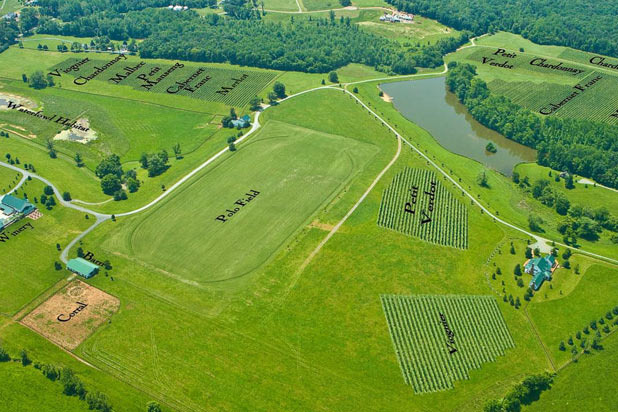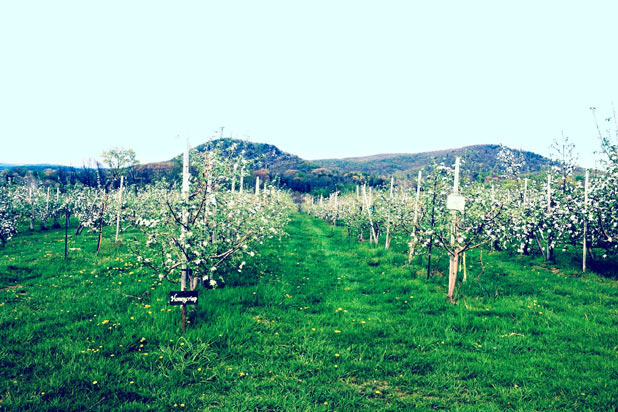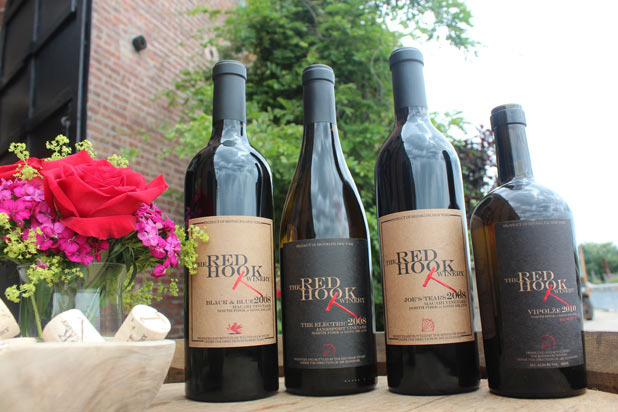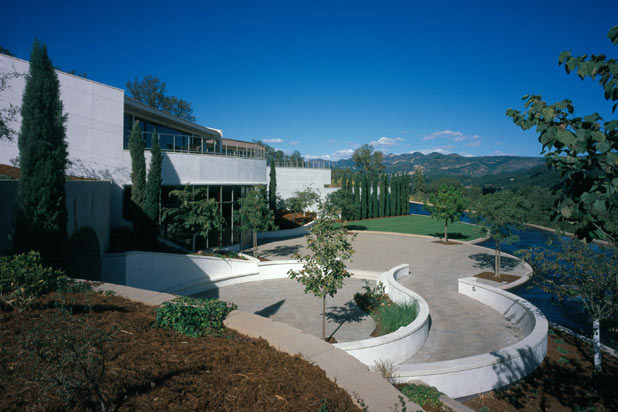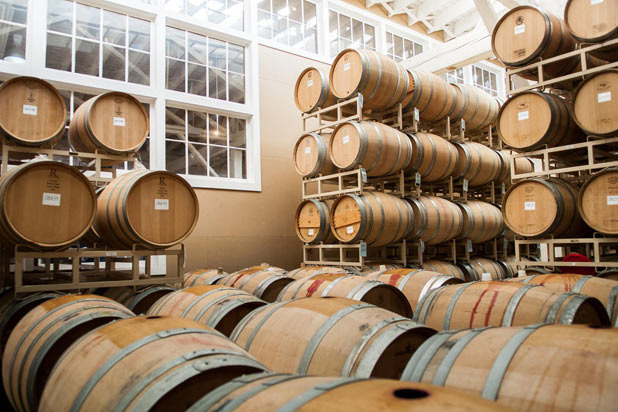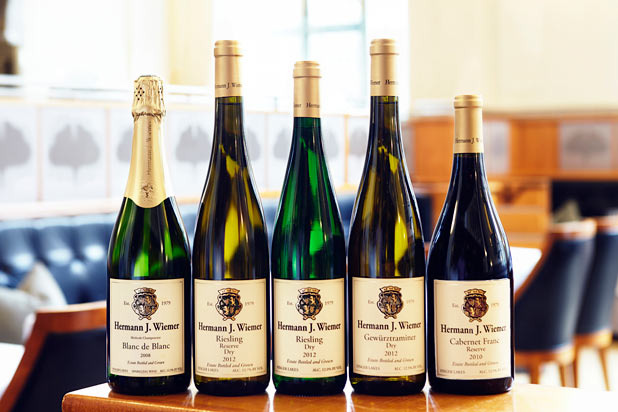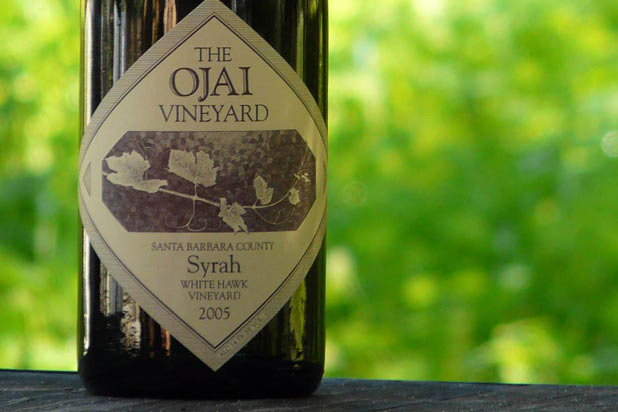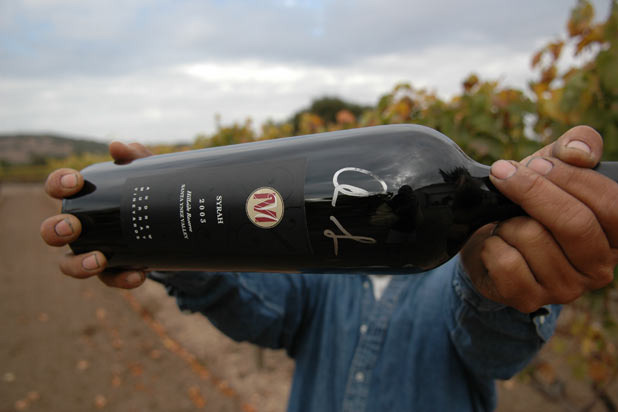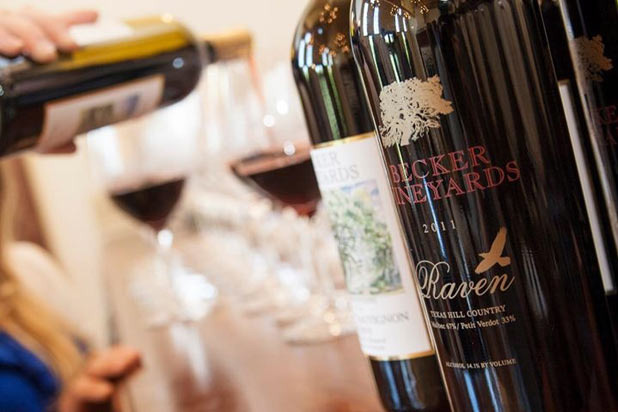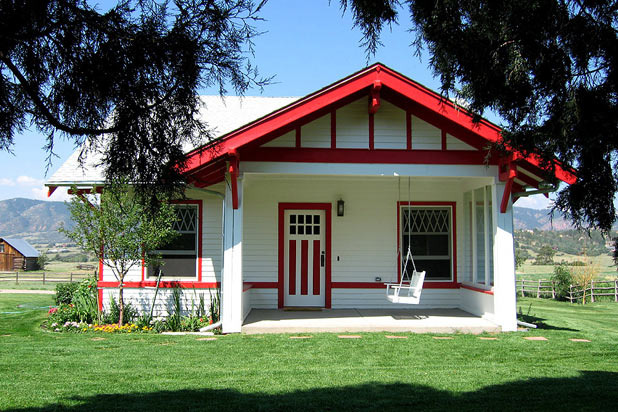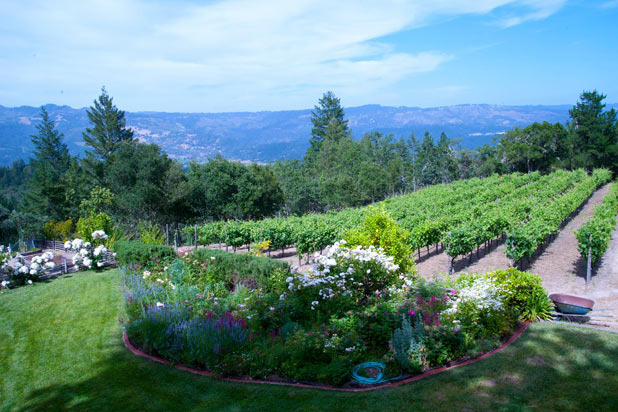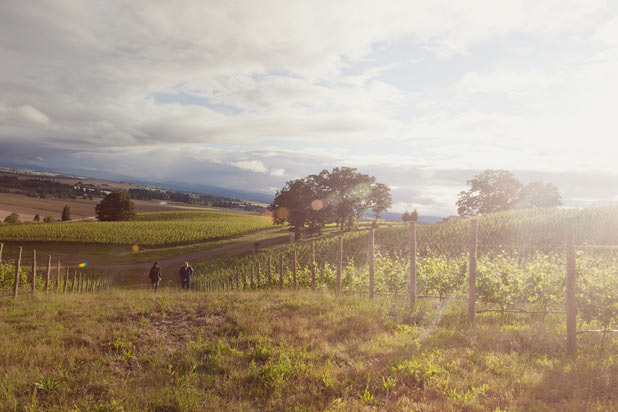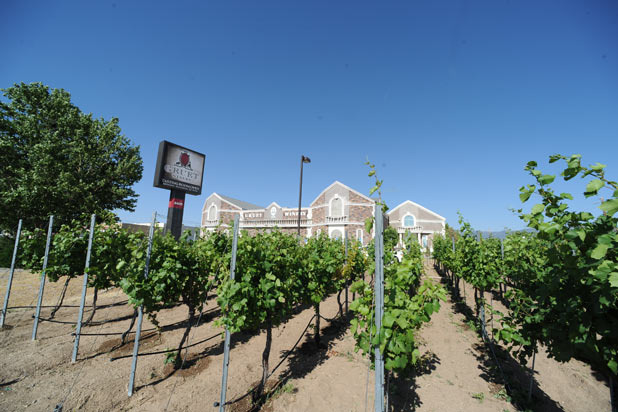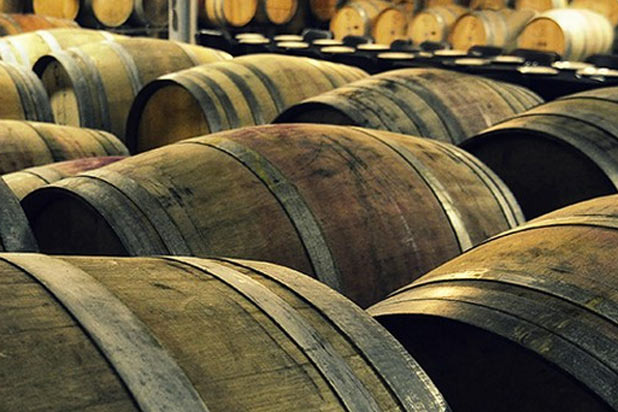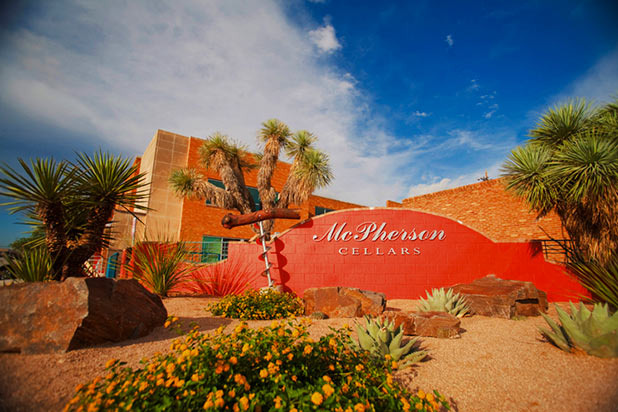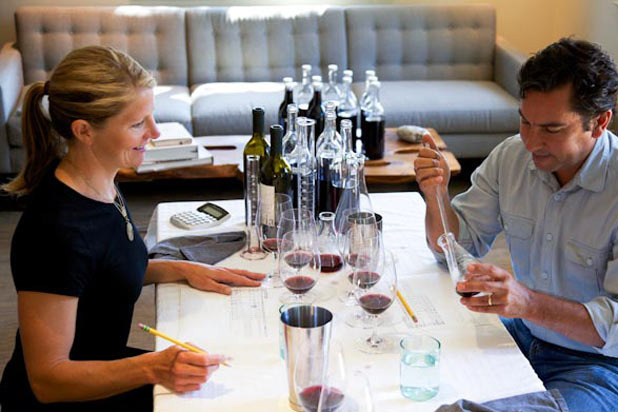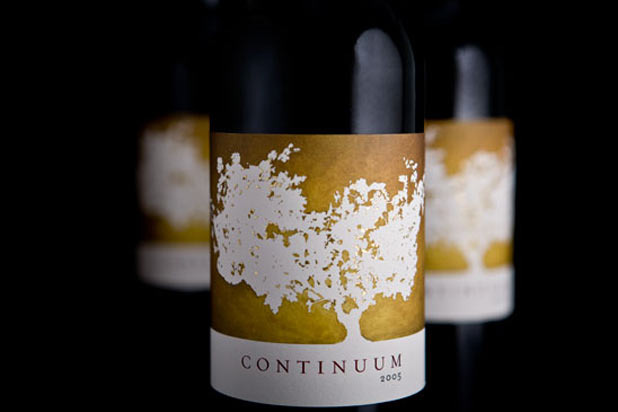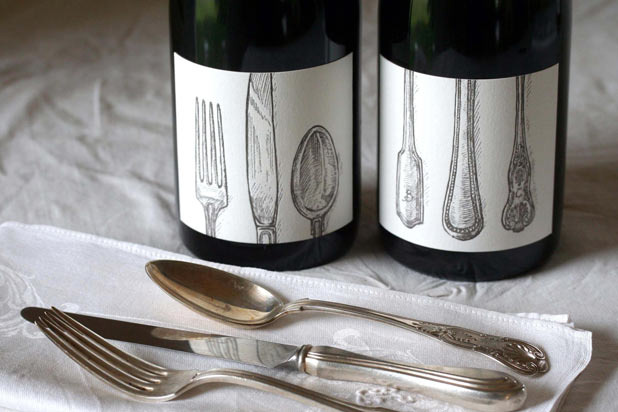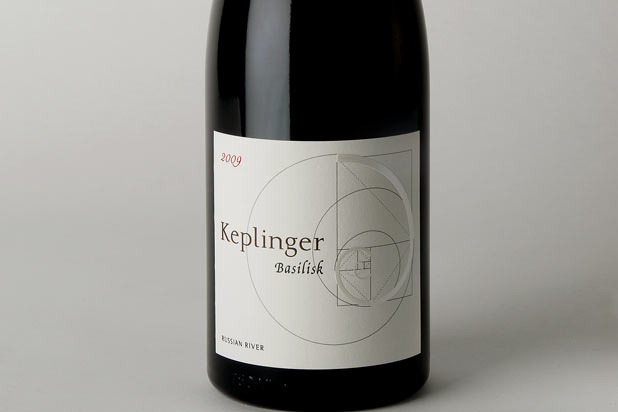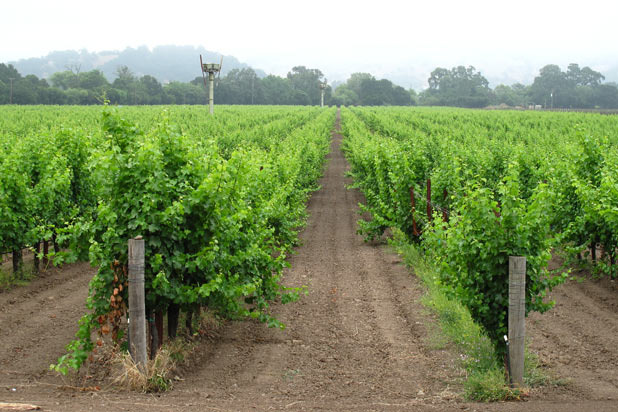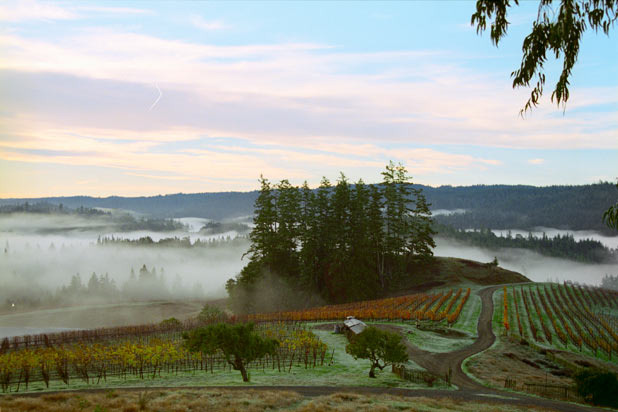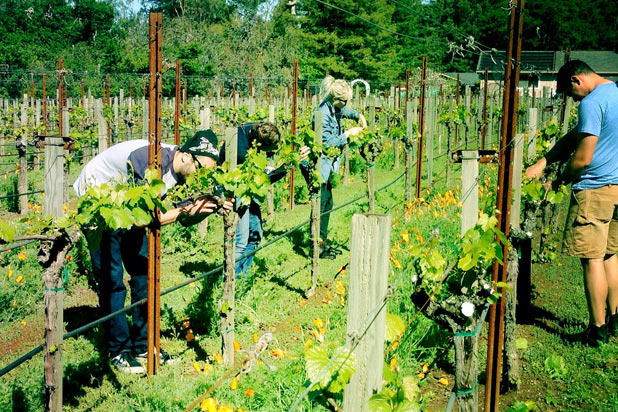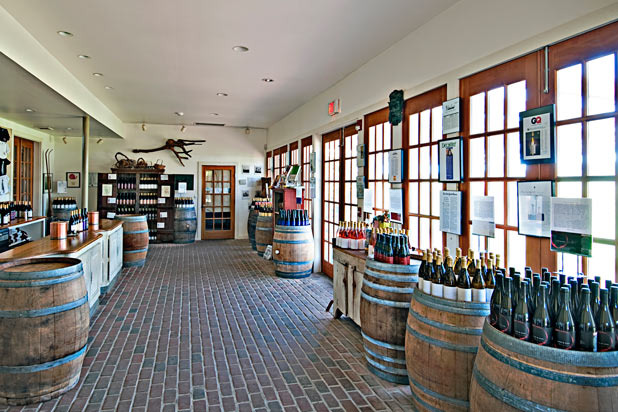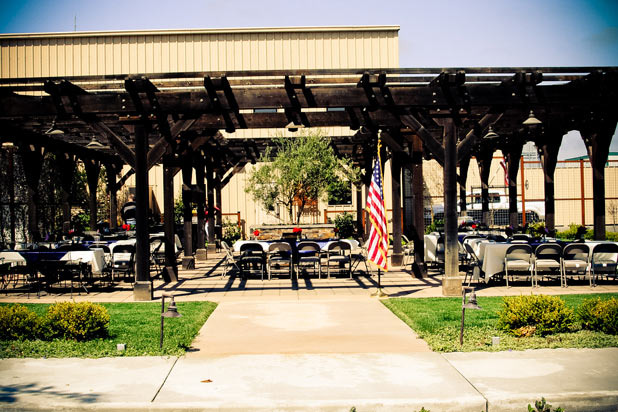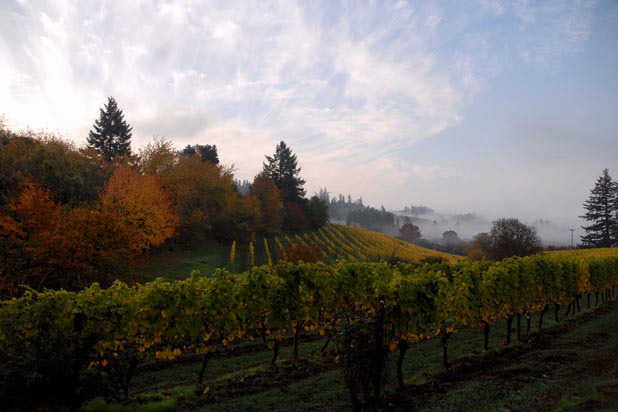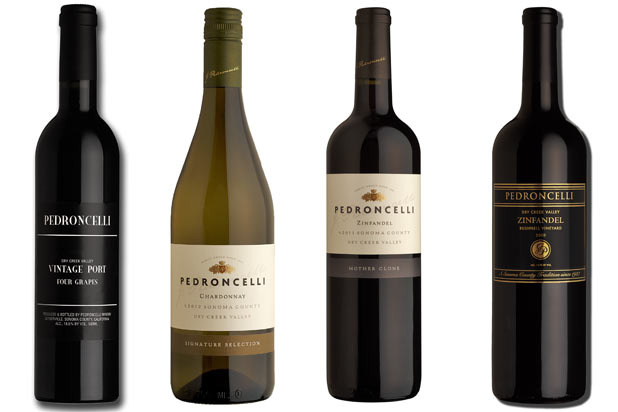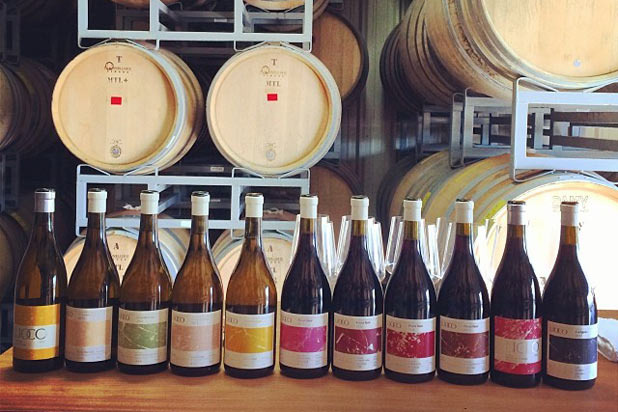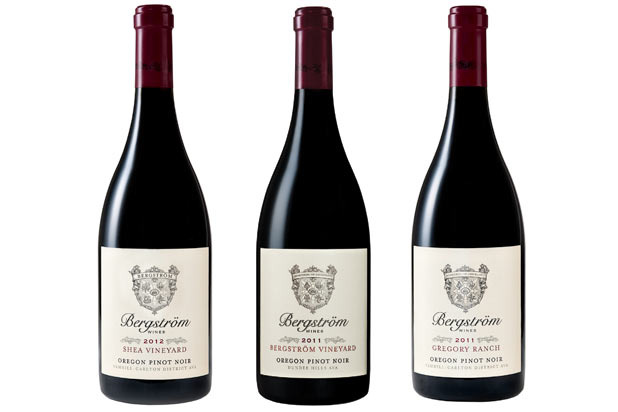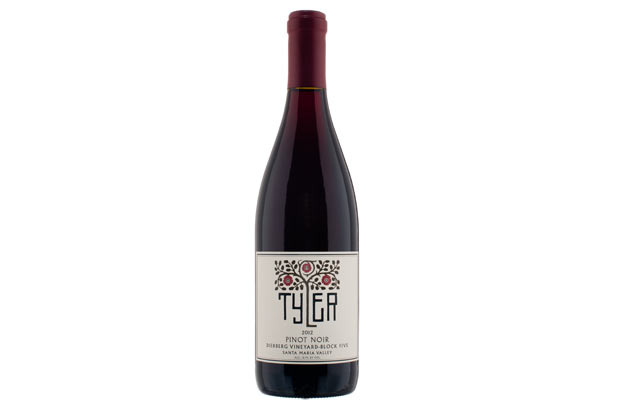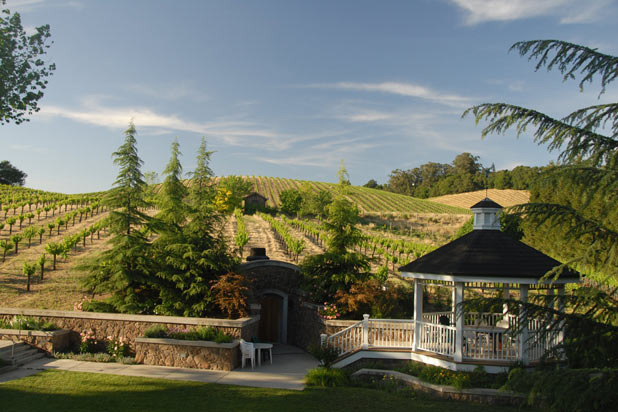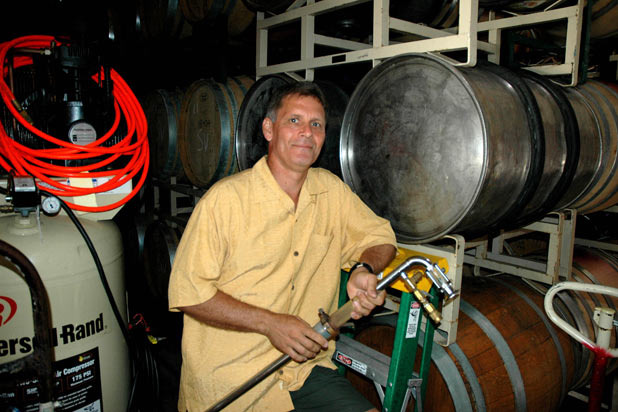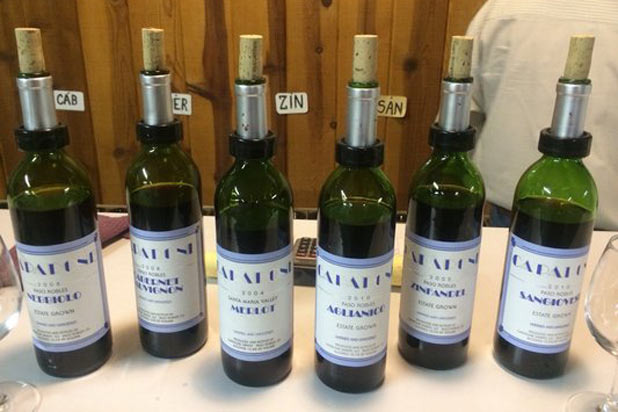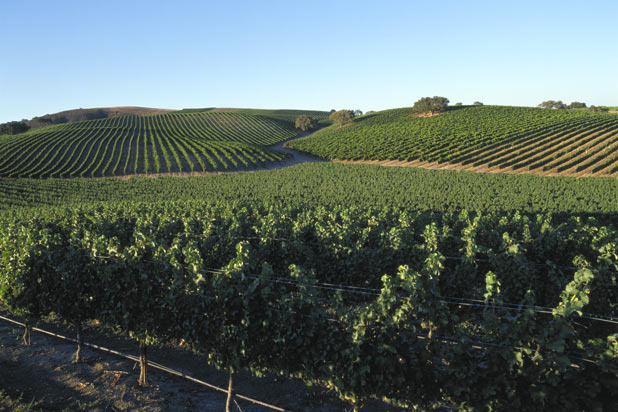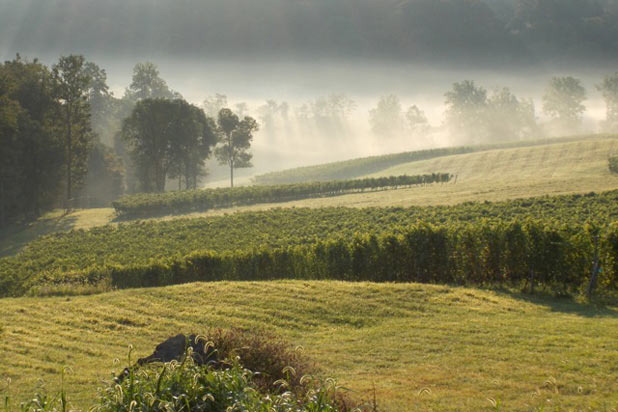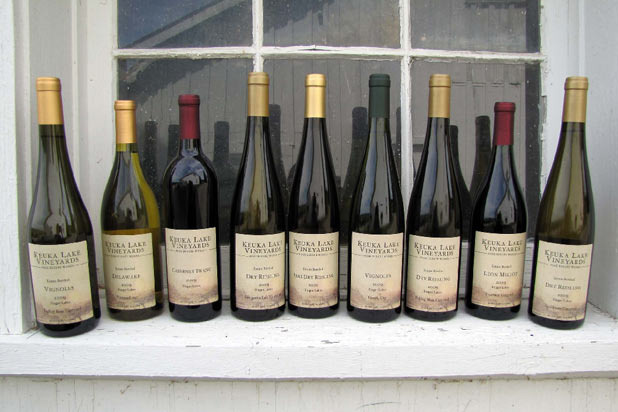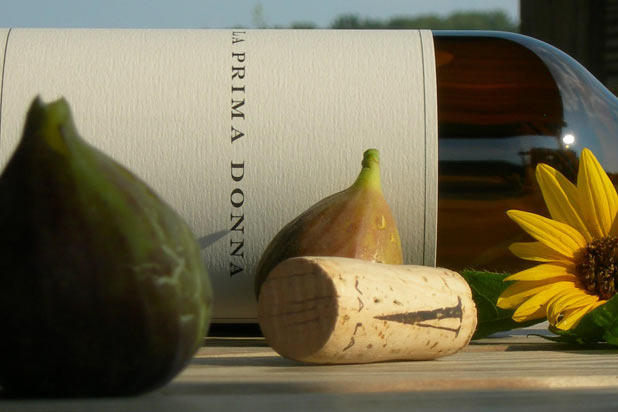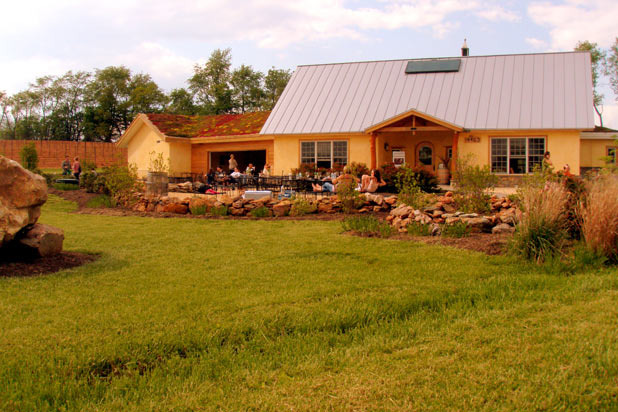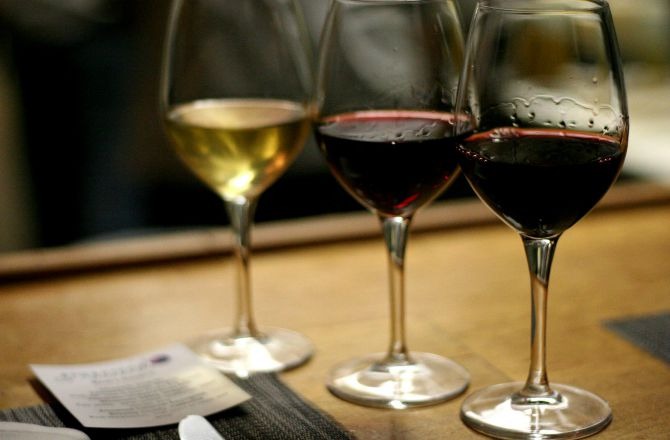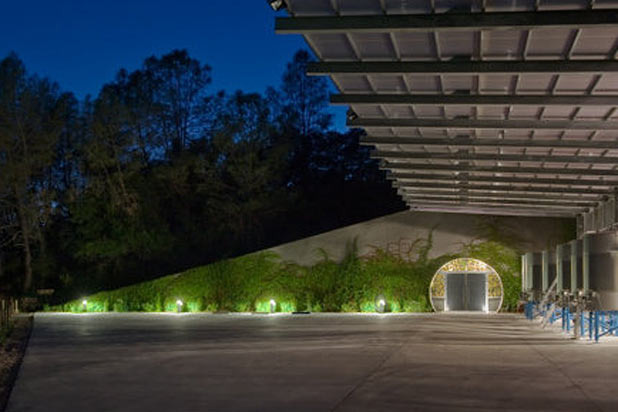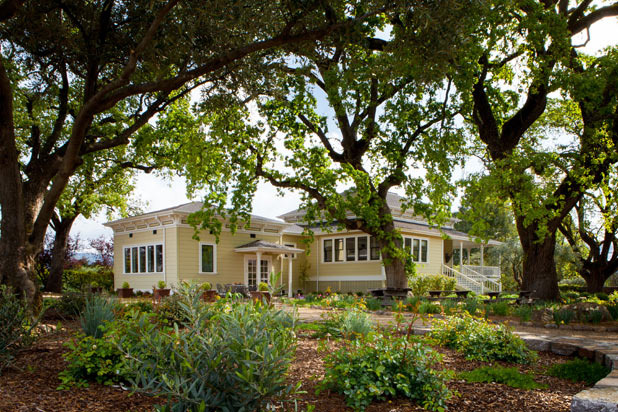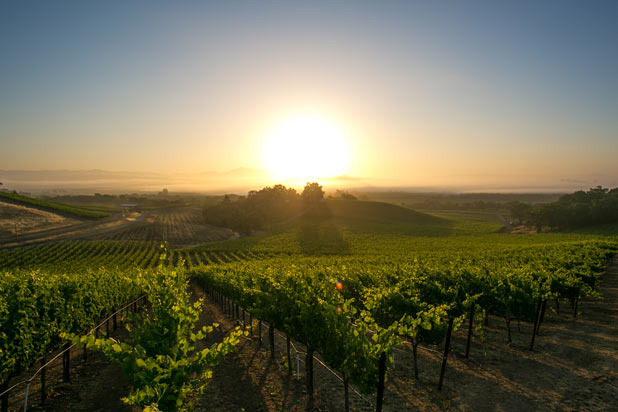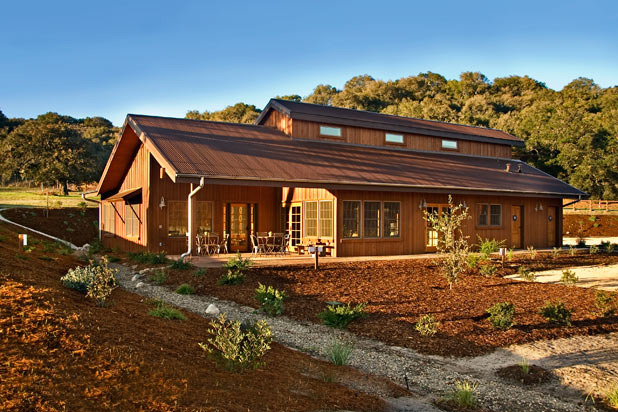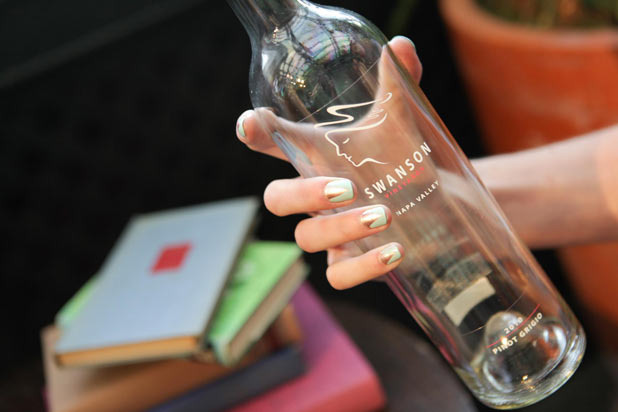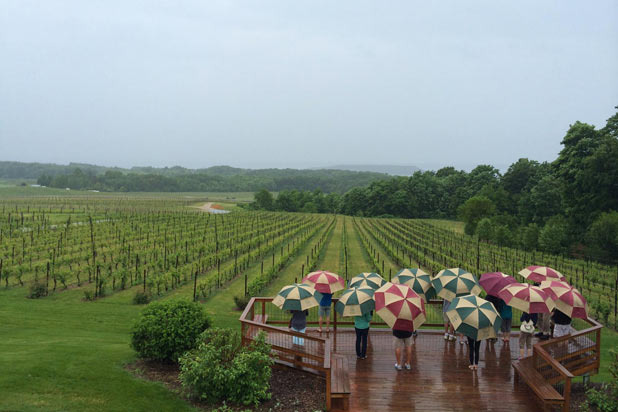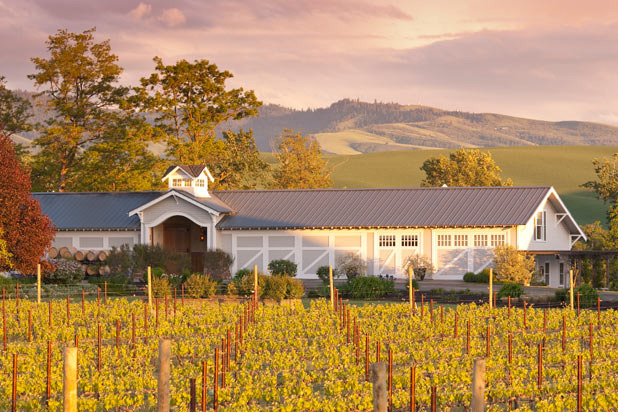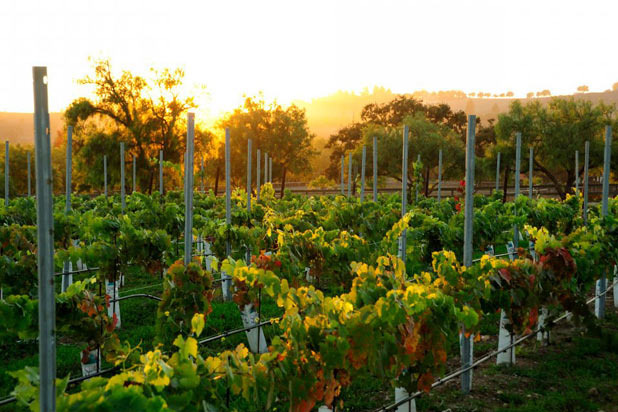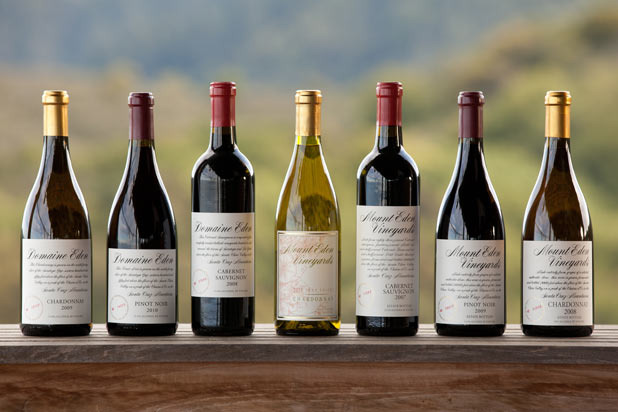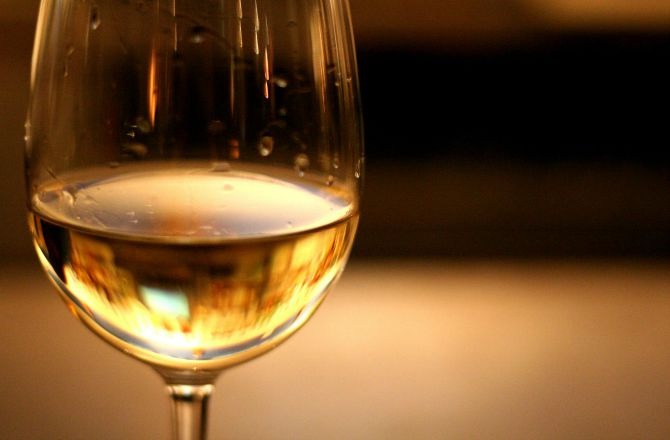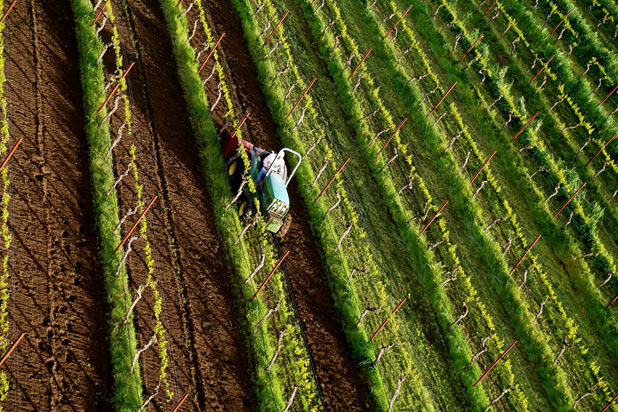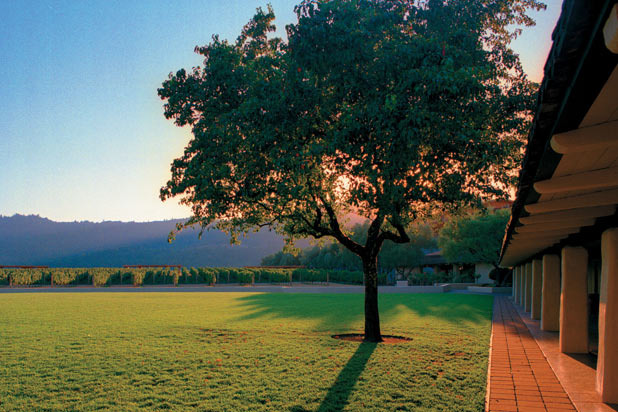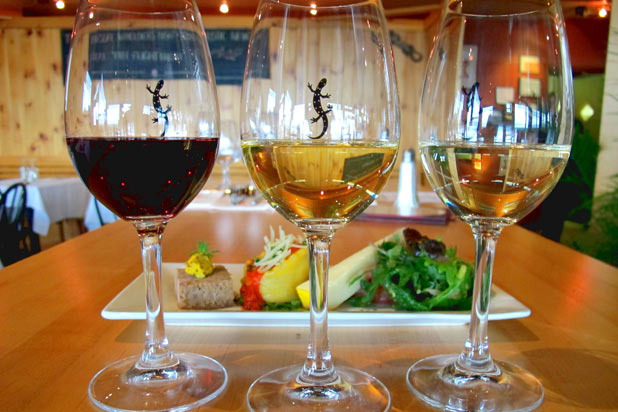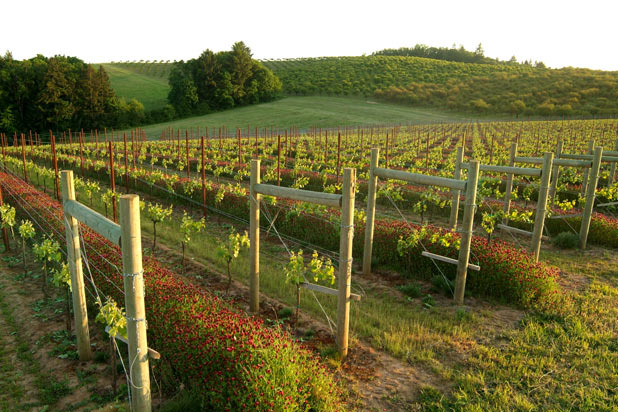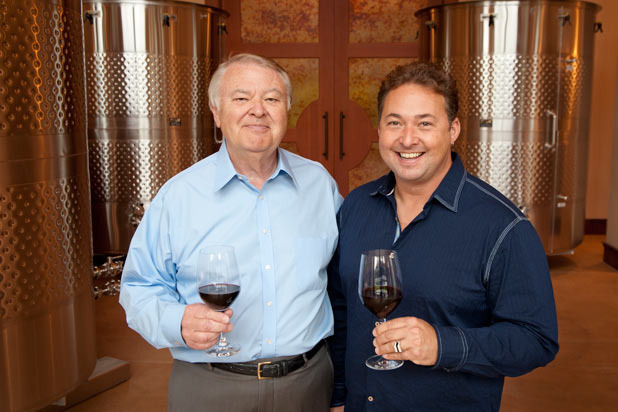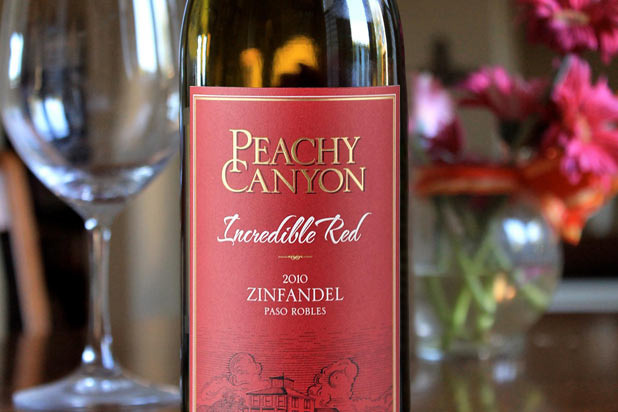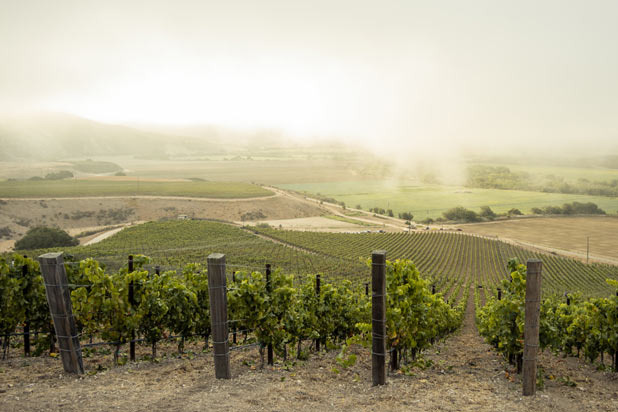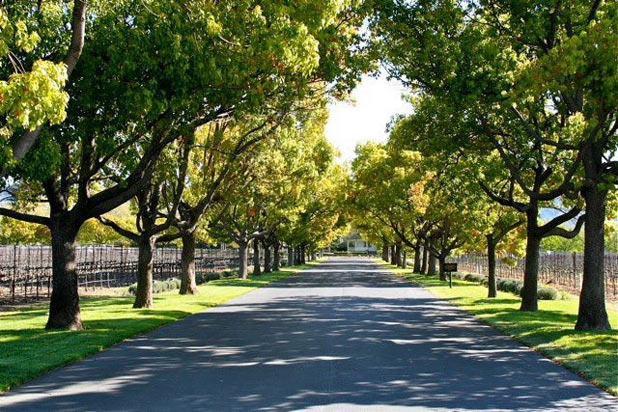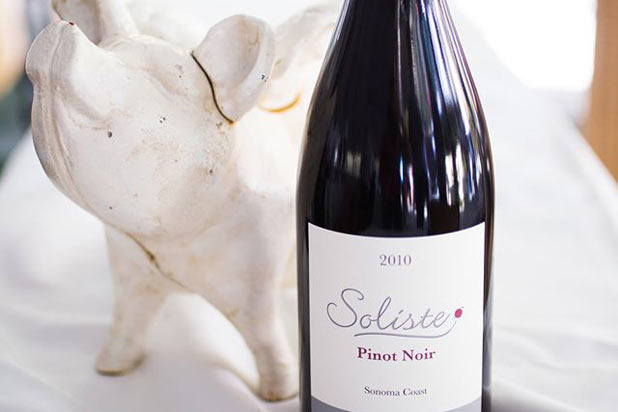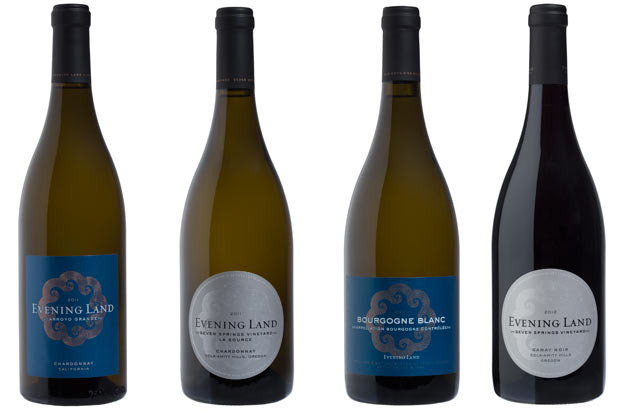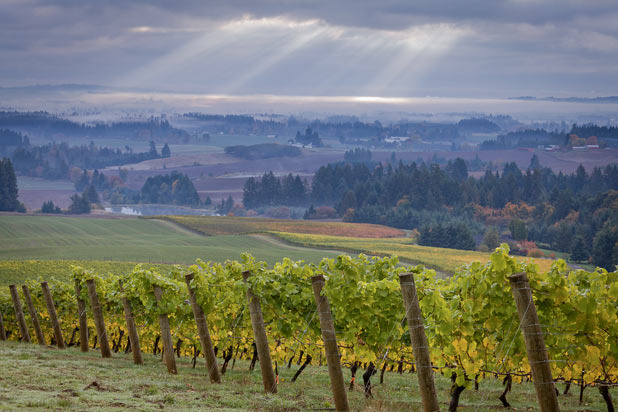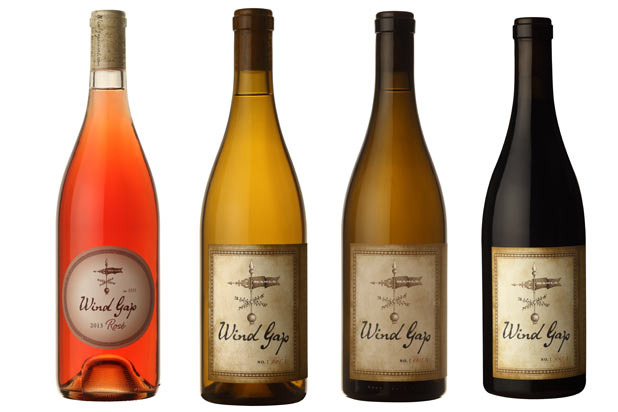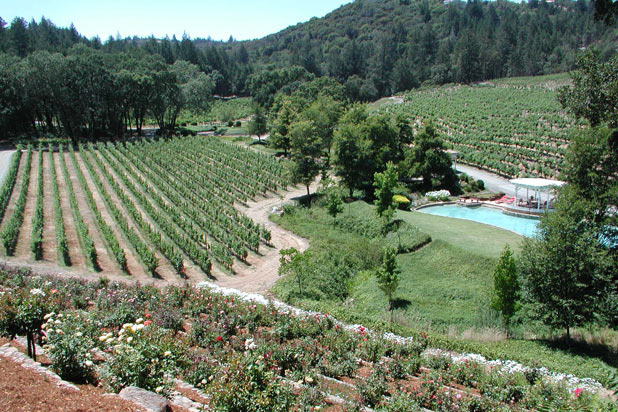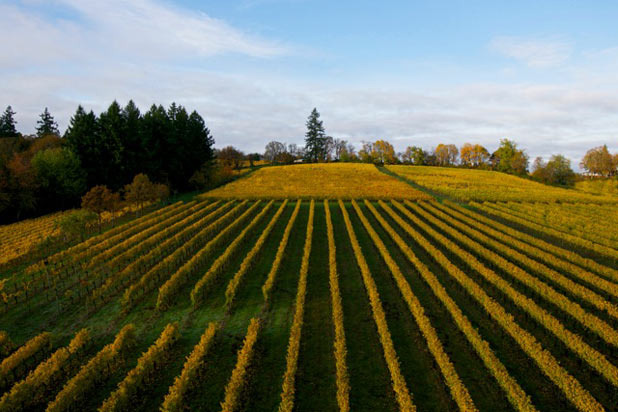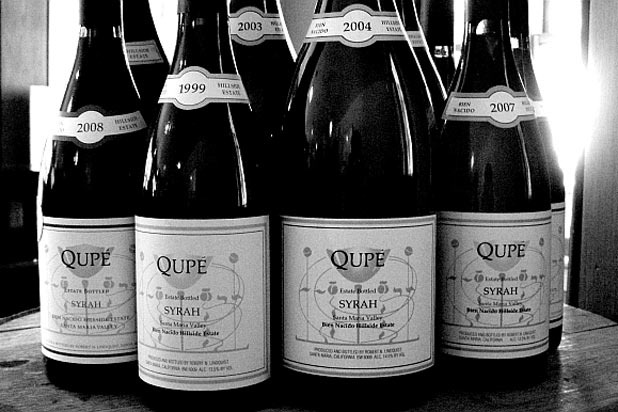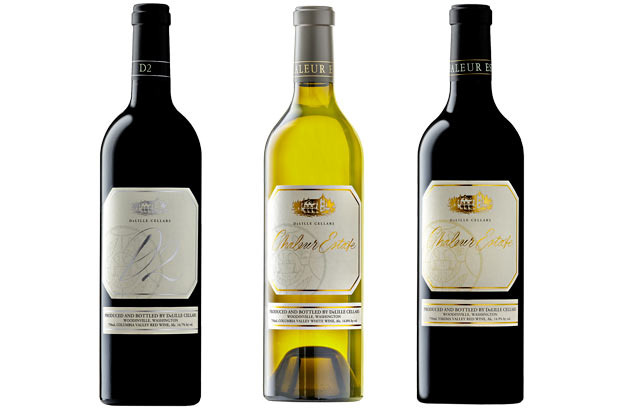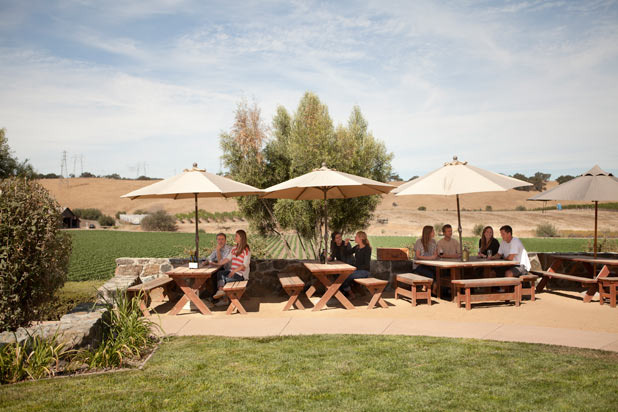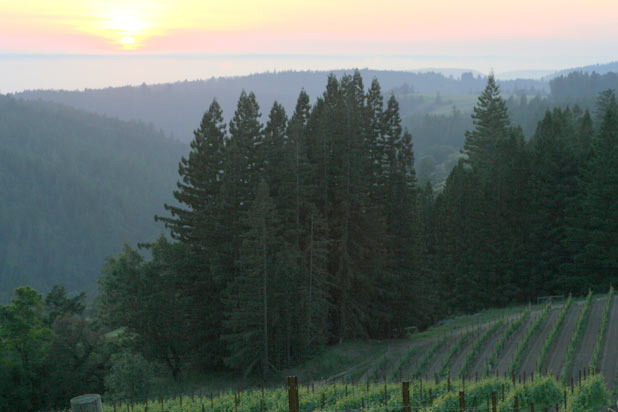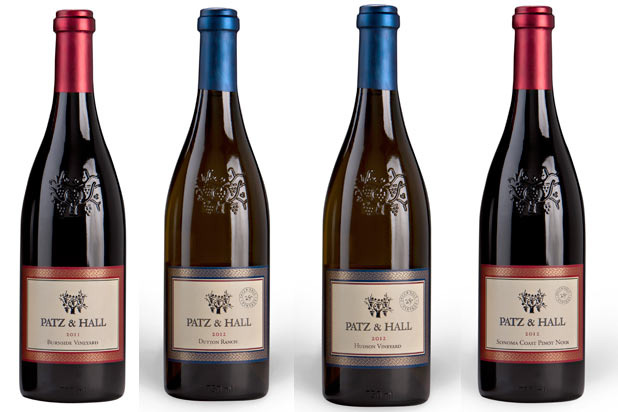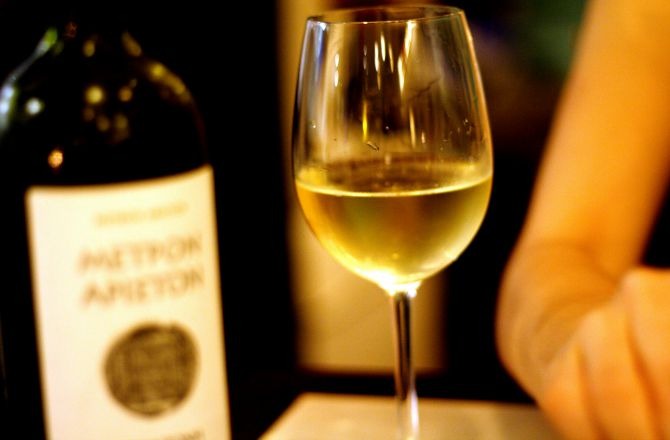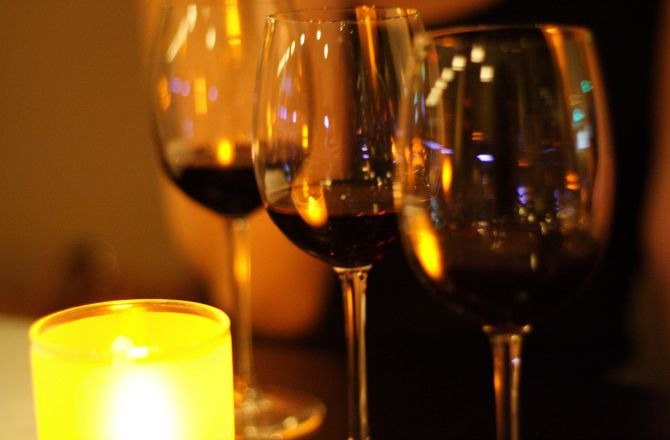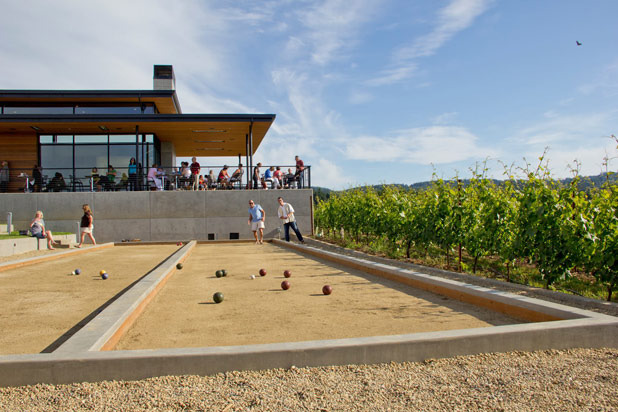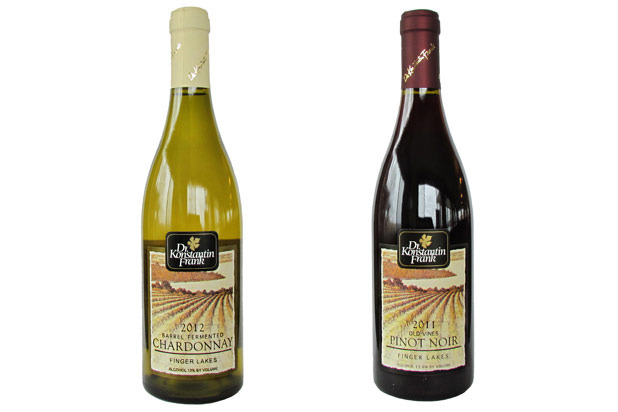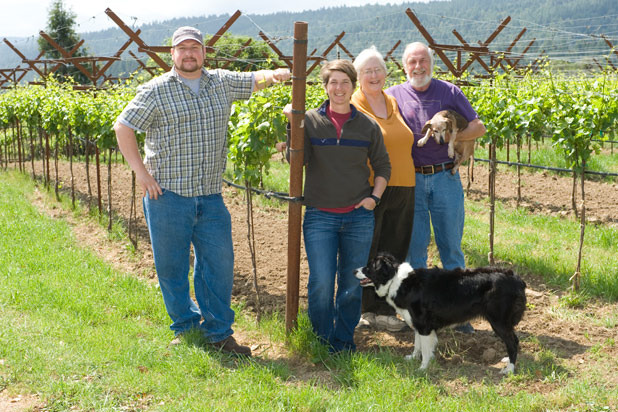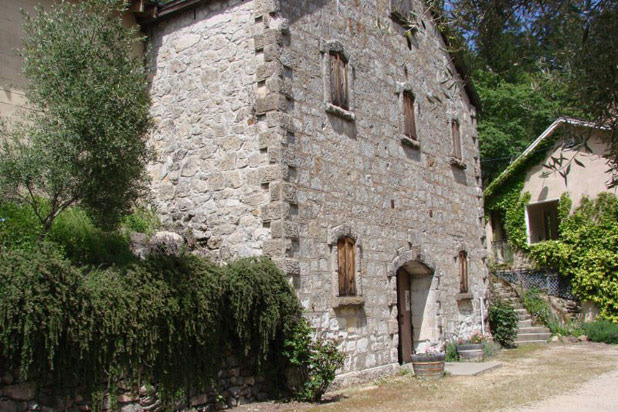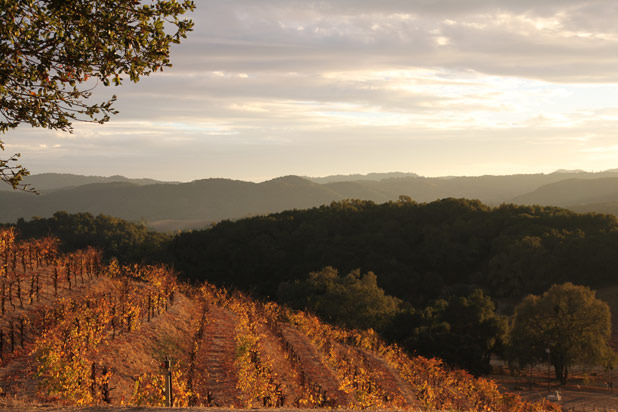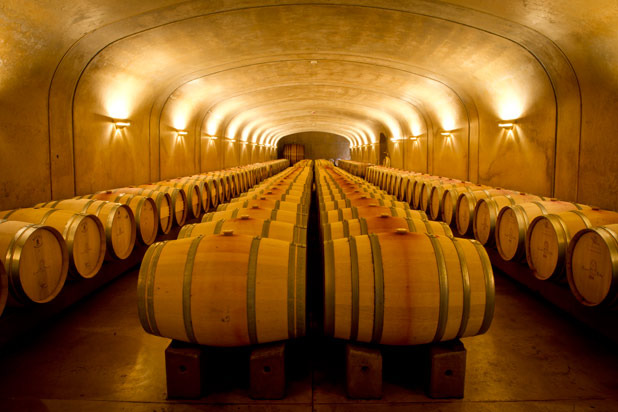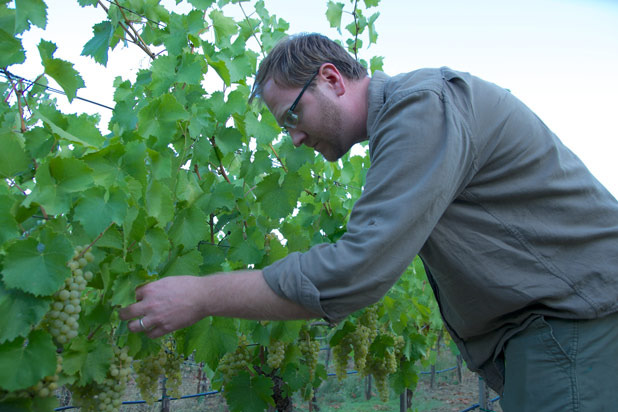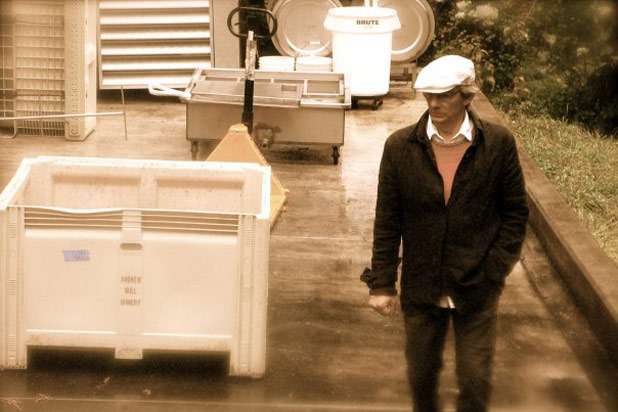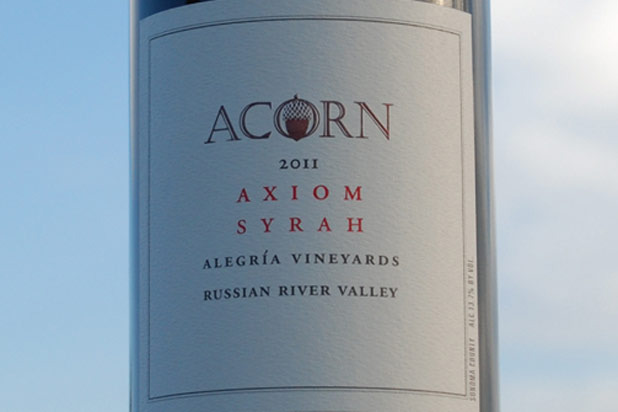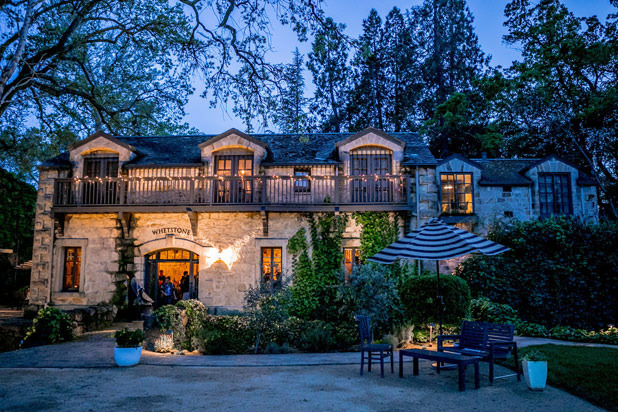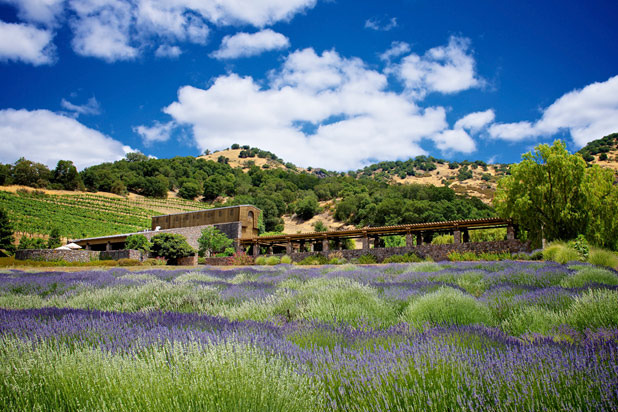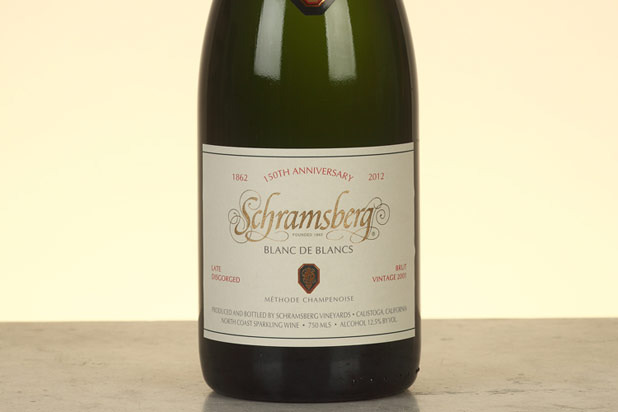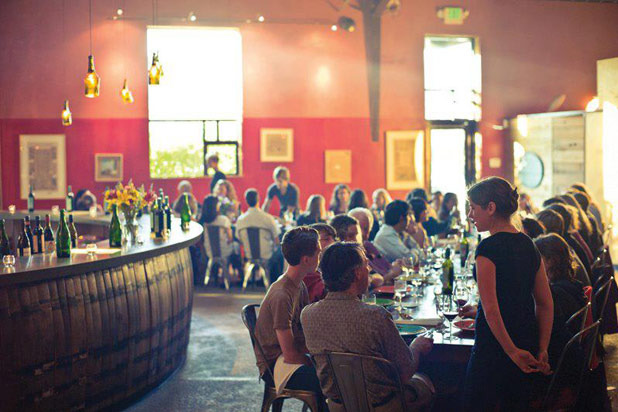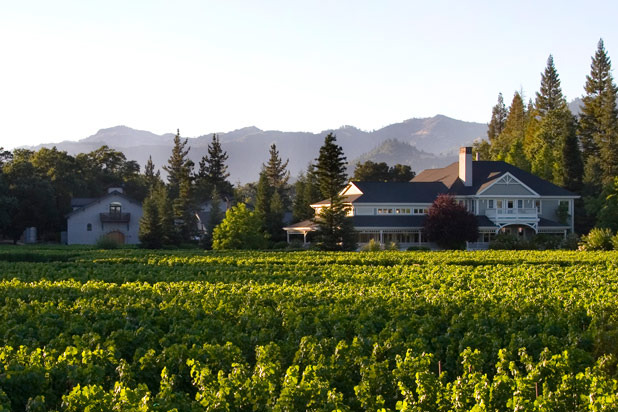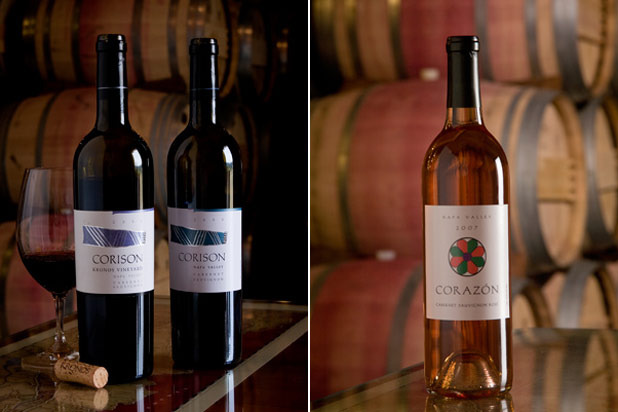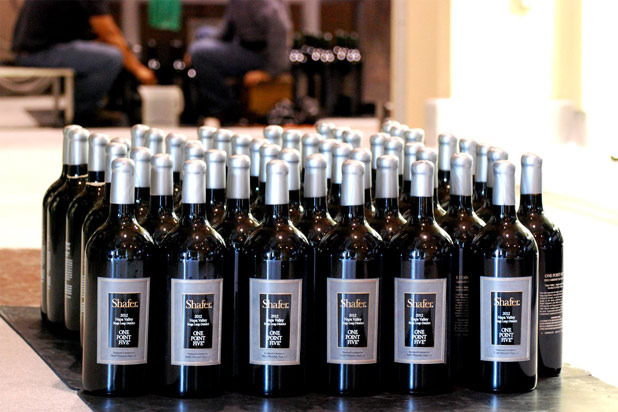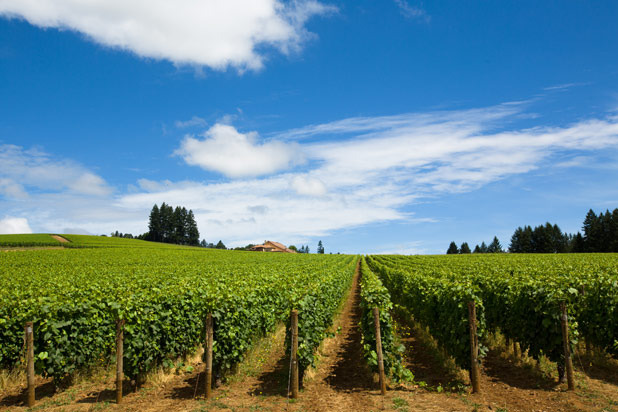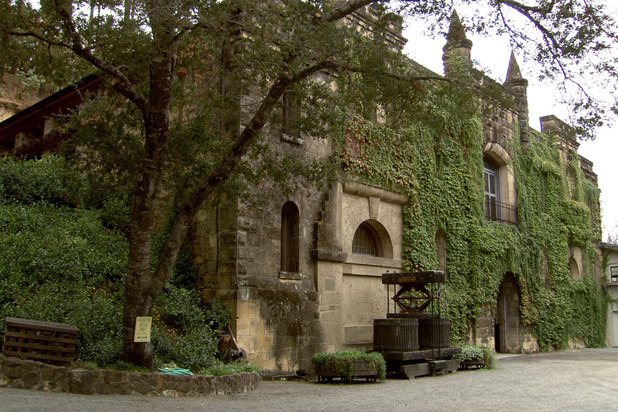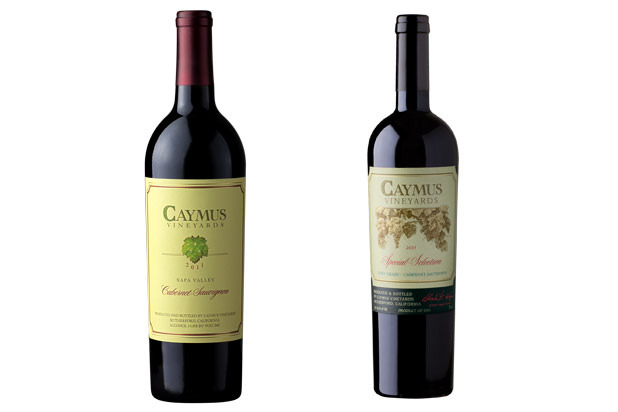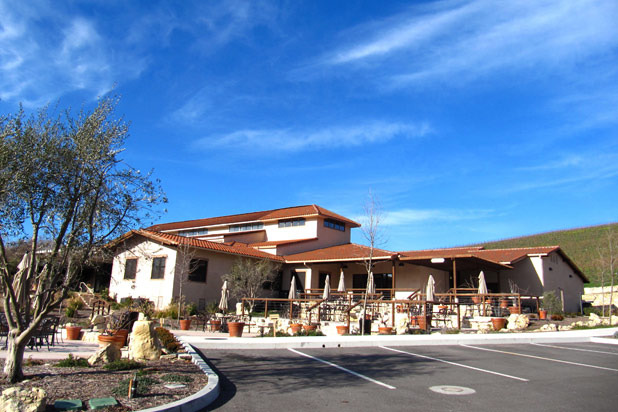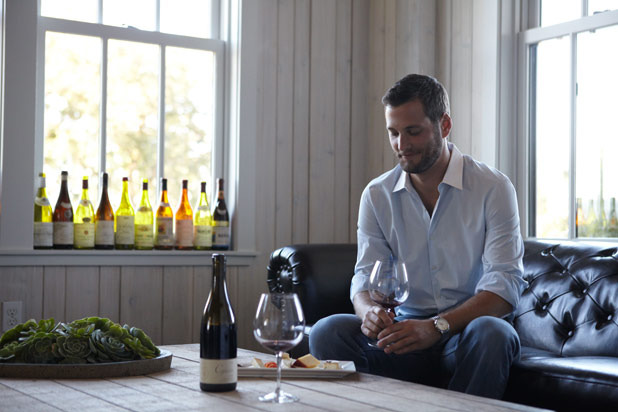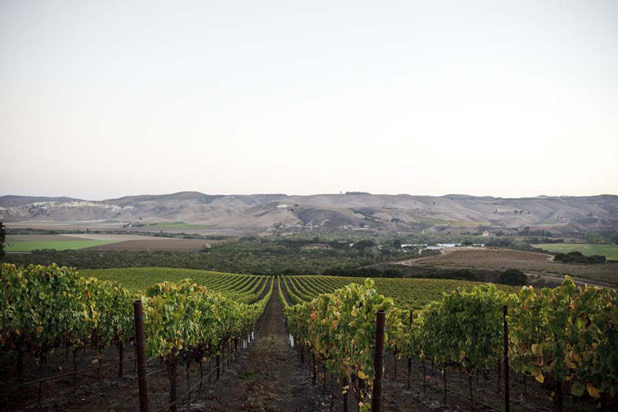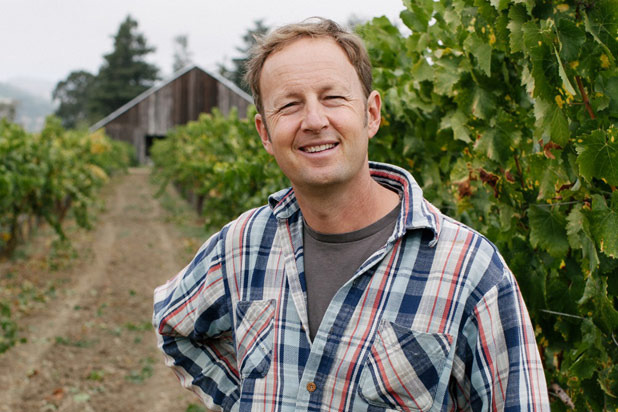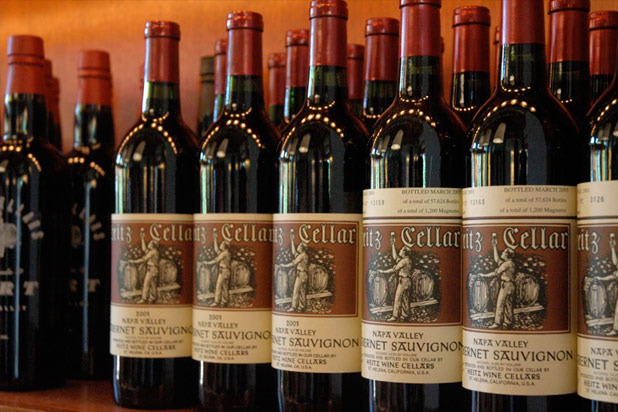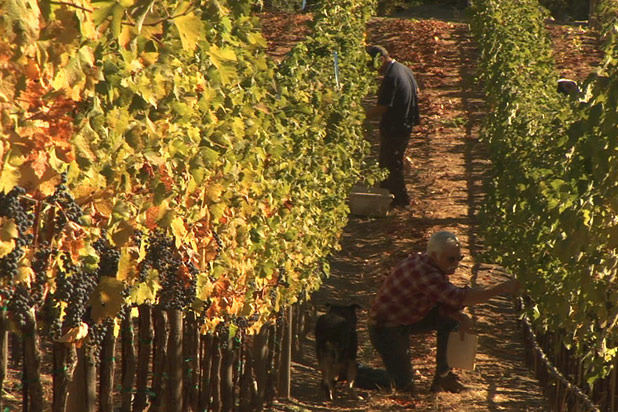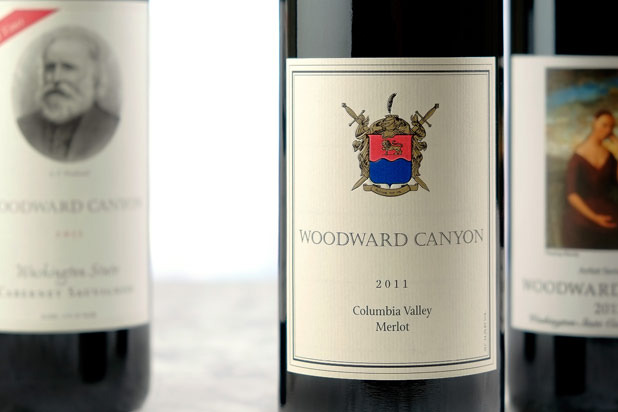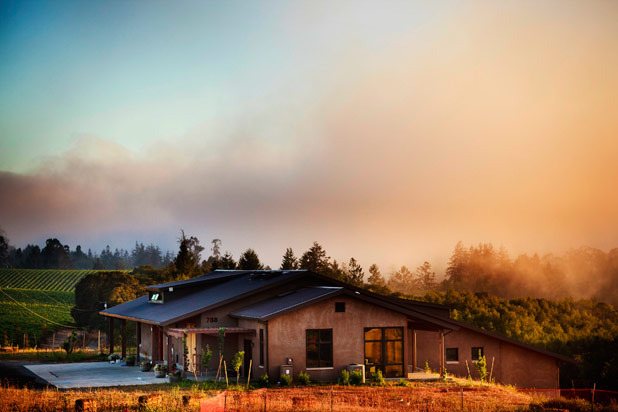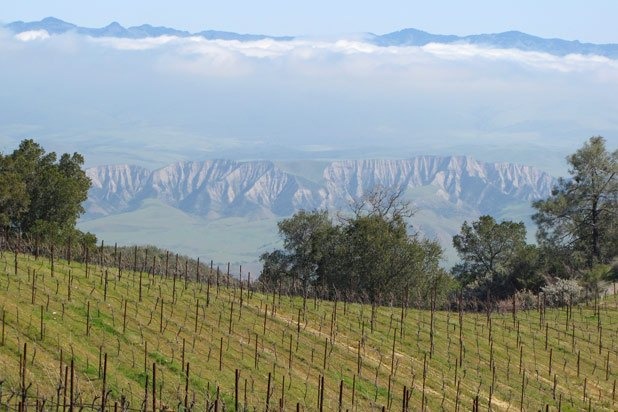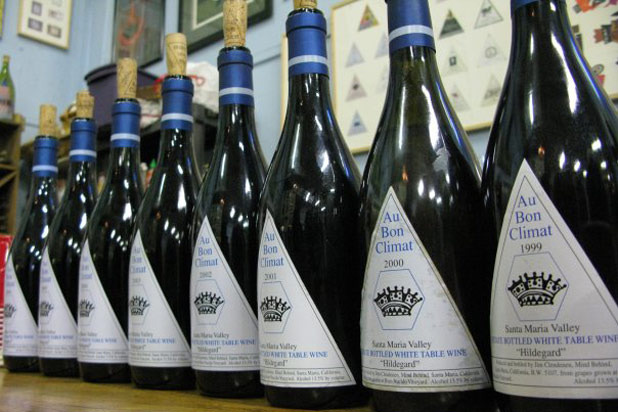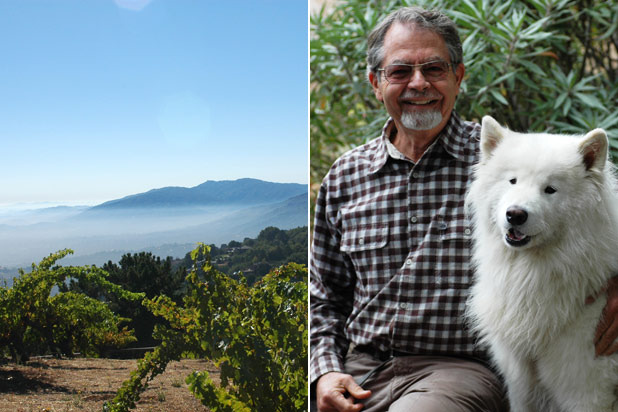101 Best Wineries In America (Slideshow)
Felicitously positioned in the foothills of the picturesque Blue Ridge Mountains, King Family Vineyards is one of the most popular wedding venues in Virginia. It is also a hard-working vineyard: currently, 28 acres of the 327-acre farm are planted with merlot, viognier, cabernet franc, chardonnay, and petit verdot vines, recently joined by malbec and petit manseng. The rest of the land absorbs throngs of event-goers, tasting room attendees and, from Memorial day to mid-October, spectators who flock here to enjoy free polo matches.
100. Warwick Valley Winery & Distillery — Warwick, New York
This Hudson Valley producer makes several memorable wines. Black Dirt Red, produced from baco noir, a hybrid grape, is one of those smooth reds that pairs with a surprisingly wide array of foods. Harvest Moon, their white blend, is a well-priced, fun, porch-pounder that you can keep chilled in your fridge all summer. Each of their wines is tasty, well-priced, and just fun to drink, which ties in perfectly with the super-friendly atmosphere at their winery. Warm weather always finds their patio filled with people drinking wine and eating food from the onsite café.
99. The Red Hook Winery — Brooklyn, New York
Quality wine being made in a New York City borough! Started by Brooklyn native Mark Snyder and two cult California winemakers, Robert Foley and Abe Schoener, The Red Hook Winery sources fruit from Long Island and the Finger Lakes and crafts wines in its Brooklyn facility. The two winemakers each make their own wines, splitting every lot of juice in half to create very different, yet terroir-expressive, wines, ranging from white to red to orange. Hurricane Sandy devastated the winery in 2012, destroying much of the 2011 and 2012 vintage wines, but the facilities returned to functionality for harvest in 2013.
98. Vineyard 29 — St. Helena, California
Founded in 1992, Vineyard 29 made its first wines in rented facilities, under first-rate winemakers Gary Galleron, Heidi Barrett, and Philippe Melka. In 2002, the brand was purchased by Chuck and Anne McMinn, who have since built a beautiful winery and acquired additional property. The wines are primarily from Bordeaux and Burgundy varities and are sold under the 29, Aidi, and Cru labels.
97. Seven Hills Winery — Walla Walla, Washington
"This Walla Walla vino-veteran consistently makes some of the greatest cellar-worthy cabernet sauvignon (and Bordeaux blends) in North America." — Peter Eastlake
Founder Casey McClellan is a fourth-generation farmer whose focus is on vineyard-driven wines. In addition to producing numerous wines from their own Walla Walla property, they source grapes, under long-term contracts from well-regarded vineyards in neighboring areas. In addition to reds they source pinot gris in Oregon and viognier in Columbia Valley. Visit their tasting room for a simple way to taste the history of Walla Walla and the surrounding region in one stop.
96. Hermann J. Wiemer Winery — Dundee, New York
Some say that this winery produces the best wines in the Finger Lakes region. Though that opinion is clearly subjective, it cannot be disputed that founder Hermann J. Wiemer was a pioneer of Finger Lakes winemaking and can be partially credited with turning the region into the quality wine-producing region it is today. The winery's specialty is riesling, which isn't a surprise, given Wiemer's upbringing in the center of German riesling production, and the winery's bottlings are consistently among the best rieslings in America.
95. The Ojai Vineyard — Oak View, California
Adam and Helen Tolmach have been making small lots of wine for more than 30 years now, using long-term contracts with growers local to their winery as the foundation of their business. Their minimalist approach has led to wines like their signature blend, Ojai Red, which is highly sought-after. (The current offering is an unusual combination of equal parts sangiovese, syrah, and pinot noir.) Other bottlings include several chardonnays and rieslings and award-winning syrahs and pinot noirs. Their faithful customers join their mailing list to assure themselves first crack at Ojai's small-lot offerings that sell out year after year.
94. Andrew Murray Vineyards — Los Olivos, California
Andrew Murray has earned his reputation as one of the most adept of the so-called Rhône Rangers with his affordable but exquisite single-vineyard syrahs, mourvèdres, and cinsaults, and his excellent viognier and rosé (from the aforementioned varieties, plus grenache). "At a time when many California wines seem to be priced proportionally to their producers' egos," Robert Parker wrote in Murray's early days, "...Murray's offerings are a breath of fresh air given their exceptionally high quality and realistic prices." His recently launched, awkwardly named This Is E11even wines stray into non-Rhône varietals, but still offer a lot of wine for the money.
93. Becker Vineyards — Stonewall, Texas
Spanish missionaries produced the first wine in what is now Texas around 1650, and a small but vigorous wine industry developed in the state, thriving until Prohibition. Serious production began again in the 1970s, in various portions of the state — including the Texas Hill Country, between and west of Austin and San Antonio. Richard and Bunny Becker planted their first vines here in 1992 and made their first wines from the 1995 harvest. Today, they produce a wide range of first-rate wines from more than a dozen grape varieties. Their complex, expressive viognier, reserve chardonnay, Raven (malbec with 25 percent petit verdot), and reserve grenache, among other wines, earn them an undisputed place on this list.
92. Allis Ranch Winery — Sedalia, Colorado
Colorado is hardly the first state people associate with wine (especially these days, when it gets so much press for a different intoxicant), but the wine industry here dates back to the 19th century and today there are about a hundred Colorado wineries — most of them tiny boutique operations like this one. At Allis Ranch, David and Margaret Rhyne produce not much more than 400 cases annually, but their Rhône-style reds, based on syrah and grenache, are astonishing — complex, rich but delicate, full of vivid fruit.
91. Stony Hill Vineyard — St. Helena, California
Stony Hill Vineyard has always flown in the face of tradition: the founders, Eleanor and Fred McCrea, were among the first vintners to plant chardonnay grapes in the Napa Valley in modern times, although experts warned them the varietal would not thrive. The couple was also determined to make a fruity, non-malolactic, Burgundian-style wine, with just a hint of oak. They succeeded, creating lovely, Chablis-style chardonnays, which can actually spend time in the bottle without losing quality. Small production means these wines are not as easy to find as their bold, big-oak cousins, but they are well worth the search.
90. Antica Terra — Dundee, Oregon
"Maggie Harrison is humble and kind. I was lucky enough to work with her on a wine dinner a couple years, where we featured her stunning pinot noirs, along with other wines. Maggie worked at Sine Qua Non for several years before moving on to find a plot of land in Oregon where she could focus her attention on her own project. I have particularly fond memories of the Antica Terra Botanica pinot noir; with great elegance and an extremely delicate mouthfeel, yet a power behind the femininity that is stunning, this wine is remarkable." — Rachael Lowe
If you need proof that the most difficult route is often the most rewarding, just look to Antica Terra in Oregon's Eola-Amity Hills AVA of the Willamette Valley. Though the winery had been in existence since the 1980s, new owners brought on Maggie Harrison in 2005, previously of Sine Qua Non in California. Together, they decided to haul out nearly 3,600 acres of rock to plant new vines, which struggle to get through additional rock that sits underneath the soil. From these vines come pinot noir wines with intense minerality and complexity — some of the top in the Willamette Valley. Antica Terra also produces some chardonnay and a rosé, and is experimenting with sparkling wines as well.
89. Gruet Winery — Albuquerque, New Mexico
"The Gruet family had already been producing produced champagne in Bethon, France, for 30 years when they first traveled through the American Southwest. Astonishingly, they found European winemakers who had planted pinot noir and chardonnay at high altitudes about 150 miles south of Albuquerque, and the rest is history. The Gruet family began producing sparkling wines outside of Truth or Consequences, New Mexico, in the classic méthode traditionelle, relying on the low humidity to prevent rot, and the cool nights at 4,300 feet to slow ripening of the grapes for greatest complexity.
"These wines are simply lovely, and incredibly inexpensive given their quality: from $15 to $20 for their non-vintage sparklers; and from $25 to $42 for their vintage sparkling wines. They produce a variety of styles from chardonnay/pinot noir blends, sparkling rosés, to blanc de blanc (100 percent chardonnay) and blanc de noir (100 percent pinot noir) across a variety of residual sugar levels from brut to demi-sec. Bubbles are the perfect accompaniment to fatty and salty foods. At these prices, you can enjoy them with every day, even with fried chicken, fish and chips, or buttered popcorn. Quality, consistency, value, and bubbles: an unbeatable combination." — Maxine Borcherding
88. Ravines Wine Cellars — Hammondsport, New York
"This Seneca Lake (Finger Lakes) winery makes excellent German-style dry riesling and other Euro-tuned wines that show the emerging serious side of Upstate New York wines." — Peter Eastlake
This winery's story involves two countries: co-founder and winemaker Morten Hallgren grew up in Provence before moving to the United States. His business partner and wife, Lisa, who is also a chef, has worked with him to combine old world ideology with modern technology. As is typical for the fast-emerging region, white varietals are strongly featured. Riesling is what they're best known for and they also produce gewürztraminer and several other whites. Complementary reds include cabernet franc and pinot noir. Food and wine pairing events occur at the vineyard throughout the year.
87. McPherson Cellars Winery — Lubbock, Texas
Clinton A. "Doc" McPherson was a pioneer of the modern Texas wine industry as co-founder of Lubbock's respected Llano Estacado Winery in 1976. He is also credited with having introduced Spain's tempranillo grape to the Lone Star State, where it has done surprisingly well. Doc's son Kim founded McPherson Cellars in 2008, turning an old Coca-Cola bottling plant in downtown Lubbock into his winery. Today he works with a variety of French, Spanish, and Italian grapes. His reserve roussanne is one of America's finest expressions of that definitive Rhône Valley white grape; his lean but elegant dry muscat is an unusually successful expression of this trendy grape's possibilities as crisp table wine; his sangiovese has a never-in-Italy intensity. Best of all, these and other McPherson wines are rarely priced over $20.
86. Favia Wines — Napa, California
Couple Andy Erickson and Annie Favia has impeccable credentials (Screaming Eagle, Dalla Valle) as viticulturalist (she) and winemaker (he), so it's not surprising that the two decided a few years ago to form their own cult winery, Favia. Finding just the right vineyards, they jointly make about eight wines — white and red, varietals and blends — from Napa Valley grapes as well as grapes from Amador County in the Sierra foothills. The Lincoln, their Amador County grenache, and Rompecabezas, a blend of Amador grenache, mourvèdre, and syrah, are particularly noteworthy.
85. Continuum Estate — St. Helena, California
For a quarter-century, Tim Mondavi was the winemaking force at his father's eponymous Robert Mondavi Winery, and he also had a hand in joint-venture wines, including Opus One and Ornellaia. In 2005, he and his children joined forces with sister Marcia Mondavi Borger and her children to found Continuum Estate in the east mountains of Napa Valley. There is only one wine — a stunning red Bordeaux-style blend dominated by cabernet sauvignon.
84. Big Table Farm — Portland, Oregon
"From their gorgeous letterpress labels to their seriously good Willamette Valley pinot noir, it's impossible not to love this tiny husband-and-wife Oregon winery." — Peter Eastlake
This operation is a partnership between Brian Marcy and Clare Carver. Brian is the winemaker, Clare manages their 70-acre property and sells the wines. She's also an artist, and designs their eye-catching labels. Because of their location in Willamette Valley, it's no surprise that the lion's share of their acclaim has come for their pinot noirs. In addition to other wines such as syrah and a white blend called Wirtz Garden, they also sell other products from their farm, such as free-range eggs, pork, and chicken. They're very much a back-to-the-land lifestyle brand.
83. Keplinger Wines — Napa, California
It was a stint in Spain's Priorat region that connected Helen Keplinger with the region's traditional garnacha tinta (red grenache). While helping to open a winery there, Keplinger and her husband DJ traveled throughout southern France and fell in love with the region's way of life — including the wines. After returning to the U.S. and working at several wineries in Napa, Keplinger created her own winery focusing on California grenache and syrah, along with other varieties popular in southern France. Made from fruit sourced from Sonoma and the Sierra Foothills, Keplinger Wines display complex layers of flavor and richness.
82. Gramercy Cellars — Walla Walla, Washington
"Set up by a New York Master Sommelier, Greg Harrington, and his wife Pamela, who tasted Walla Walla wines and realized they were completely different from anything else in the U.S. — earthy but fruity with awesome balance — Gramercy aims to make wines from top vineyards with an optimal balance of earth, fruit, and structure (tannin, acid, alcohol). They're all about minimalist winemaking techniques and letting the terroir come through in the wine. The rosé, syrah, and cabernet sauvignon are outstanding, as are the blends. A must-try!" — Elizabeth Schneider
81. Freemark Abbey Winery — Napa Valley, California
With a 125-year history, Freemark is one of Napa's oldest wineries. Plenty of producers make excellent cabernet sauvignon in Napa Valley; however, very few come close to the level of quality, accessibility, age worthiness, and impeccable value that Freemark Abbey packs into their Napa Valley cabernet year after year — and all this for under $45. The cabernet sauvignon, in addition to their several single vineyard cabernet expressions, is very much their signature grape. However, the depth and quality of their portfolio also includes a delicious viognier and a remarkable petite sirah.
80. Peay Vineyards — Cloverdale, California
In the far northern reaches of the Sonoma Coast, Peay Vineyards is producing cool-climate, organically grown wines. They refer to themselves as a "first generation family winery," having been founded in 1996 by husband-and-wife team Nick Peay & Vanessa Wong, along with Nick's brother Andy Peay. The grapes, which include pinot noir, chardonnay, syrah, viognier, marsanne, and roussanne, are often some of the last picked in the region — almost pushing November, in some instances. But careful supervision results in balanced wines that have both intensity and focus, and a promising future ahead of them — just like Peay Vineyards as a whole.
79. The Scholium Project — Napa, California
It's common these days to seek out smaller producers in the hopes of finding new and innovative wine, and The Scholium Project is about as small-scale of a winery as you can get. Originally started as a one-man operation, the winery was started in bits and pieces along the way by its founder, Abe Schoener. Along the way, Schoener leased additional vineyards, created a small winery team, and now has ten current releases from grapes such as cinsault, verdelho, gewürztraminer, and petite sirah. The Scholium Project's cult following stems from Schoener's tendency to push the envelope and create truly unique wines, such as with their signature old-vine sauvignon blanc, a smoky, earthy, skin-fermented bottling.
78. Channing Daughters Winery — Bridgehampton, New York
"It first came to my attention that Long Island was producing some stunning wines when I lived in New York. Channing Daughters was a great presence in that genre, and producing wines of consistency and intellect. They had and still do have a prominent presence in the restaurant scene, considering they focus on varietals not often produced in the new world such as lagrein, blaufrankisch and tocai friulano. I especially enjoy their ramato of pinot grigio, a skin-fermented wine that has a fantastic texture and is incredibly food friendly." — Rachael Lowe
"Artisanal experimentation" is how Long Island's Channing Daughters winery describes its winemaking practices. This also explains the wide range of wines produced — white, red, rosé, "orange," fortified, filtered, unfiltered — from an even wider range of grape varieties. Whether it be one of the usual suspects, such as sauvignon blanc, chardonnay, and merlot, or an esoteric variety, like friulano, ribolla gialla, blaufränkisch, or lagrein, to name a few, each grape is hand-picked and vinified with care, ensuring top quality in addition to innovation.
77. Balletto Vineyards & Winery — Santa Rosa, California
The folks behind this winery are primarily grape-growers — in fact, they sell more than 90 percent of what they grow. First, however, they pick the very best fruit to make their own small lots of wine. Whether it's their impossibly fresh and spicy gewürztraminer or the estate syrah whose dark fruits and hints of smoked meat bring to mind a great Rhône, their offerings are quite impressive and fairly priced. This is a small, family-run operation, making wines that do an impressive job of representing each particular grape as well as the location on which it was grown.
76. Chehalem Winery — Newberg, Oregon
"Located near Newberg, Oregon with vineyards on Chehalem Mountain and Ribbon Ridge, Chehalem produces a wide variety of wines and styles from four estate vineyards, including: eight pinot noir bottlings (my favorite is the Stoller Vineyards pinot noir); a delicious gamay noir (cherry and blackberry and chocolate, oh my); two pinot gris — one bright and juicy and the other in a mouth-filling Alsatian style; a fruity and floral pinot blanc; a lightly oaked chardonnay and one produced entirely in tank, with the tongue-in-cheek name of INOX (the French term for stainless steel); a trio of rieslings including a sparkling SEXT [the name is a play on sekt, a term used in Germany for sparkling wine] ; and did I mention a gruner veltliner?
"The pinots run from about $30 to $50, and the remaining wines run between $20 and $30. A wide variety of consistently delicious wines, a great environmental ethic, and accessible prices make Chehalem one of my favorites." — Maxine Borcherding
75. Pedroncelli — Geyserville, California
Almost 90 years into their history, Pedroncelli remains a family-owned and -run winery. The fourth generation is continuing their run as one of the cornerstones of Sonoma's Dry Creek Valley. Their "Mother Clone" zinfandel is a legendary wine that delivers pure zinfandel character year after at a very reasonable price. Using traditional Portuguese grape varieties, their "Four Grapes" port is closer than anyone else in America has come to traditional vintage port. They do it all, for prices that are hard to beat, and with a friendly smile for anyone who stops at their winery. Pedroncelli exemplifies an inspiring American success story.
74. Lioco Wines — Santa Rosa, California
Matt Licklider and Kevin O'Connor are winemaking partners who are so involved in their craft that they could be characterized as "wine geeks." Licklider and O'Connor make natural wines — primarily chardonnay and pinot noir from purchased grapes. All grapes are hand-picked, fermented with natural yeasts, with minimal or no oak used, and no fining or filtration permitted. They started Lioco in a co-op winery in Santa Rosa, but they are undoubtedly destined for bigger facilities.
73. Bergström Winery — Newberg, Oregon
Bergström Winery was founded in 1999 by John and Karen Bergström, along with their son Josh, in an attempt to create a family business that would remain as a legacy for future generations. Today the Willamette Valley winery remains family-owned, with Josh acting as winemaker and general manager and his wife Caroline managing sales. To the Bergström family, each wine is a "snapshot" — an expression of the grape, terroir, and vintage that cannot be exactly replicated. Thus, it is essential to start with purity and quality in the vineyards, hence the winery's dedication to biodynamic practices in the production of their vineyard-specific pinot noirs, chardonnays, and rieslings. Each bottling is unique, but the wines share both finesse and balance across the board.
72. Tyler Winery — Lompoc, California
"Delicacy and balance" — these are the qualities that Tyler Winery strives for in their 12 annual bottlings of pinot noir and chardonnay. Started in 2005 by winemaker Justin Willett, who was then only in his mid-20s, Tyler produced a first vintage consisting of a mere eight barrels of wine. The winery now makes 2500 cases annually from vineyards throughout the Santa Rita Hills and Santa Maria Valley. The wines are well-structured and show restraint, expressing purity of grape variety and the individuality of each vineyard.
71. Truchard Vineyards — Napa, California
"In the cool Carneros region of Napa, this family-run operation is more than just outstanding pinot noir and subtle, minerally chardonnay. Tony and Jo Ann Truchard bought the vineyard in the early 1970s and were pioneers in Carneros. Tony's willingness to experiment with grapes and try new things led the Truchards to grow and make a fat, viscous, fruity roussanne, a balanced, fruity cabernet, and a spicy syrah. After 40 years and fantastic success, Tony still experiments with matching the land to the grapes looking for the next amazing wine." — Elizabeth Schneider
70. Jaffurs Wine Cellars — Santa Barbara, California
Craig Jaffurs sources grapes from some of Santa Barbara County's best vineyards and consistently releases hearty, well-balanced Rhône-style vintages — for instance, a rich, citrusy Stolpman Vineyard roussanne, a vivid Thompson Vineyard grenache blanc, a firm and meaty syrah/mourvèdre/grenache blend called High Tide — as well as, just for contrast, a very nice pinot noir. This is a winery that seems to get better with every vintage.
69. Caparone Winery — Paso Robles, California
Innovation and value stand at the core of what Dave Caparone has been doing in Paso Robles since 1979. Along with his son Marc, Caparone makes just six wines different wines, and sells them for the near-giveaway price of $14. These are no cheap wines: in fact, their releases are quite suitable for long-term aging. Their focus is Italian varietals such as sangiovese and nebbiolo. The Caparones also established what may have been the first commercial U.S. planting of aglianico, back in 1988. Zinfandel, merlot, and cabernet sauvignon round out their small but worthy portfolio of delicious, food-friendly wines.
68. Beckmen Vineyards — Los Olivos, California
Beckmen, one of Santa Barbara County's top specialists in Rhône-style wines, isn't a flashy producer, but it offers an ample range of well-crafted, well-balanced wines consistent in quality and vivid with varietal character. Standouts include a lively, mineral-edged grenache blanc; an intensely aromatic, dark and chewy Block Six Purisima Mountain Vineyard syrah; and a proprietary Rhône blend called Cuvée Le Bec that pretty much defines the genre. (Straying outside the Rhône genre, Beckmen also makes more than credible sauvignon blanc and cabernet sauvignon.)
67. Linden Vineyards — Linden, Virginia
If consistent quality is the mark of a great winery, Jim Law and his Linden Vineyard certainly qualify. Law's first Linden release was the 1987, and anyone who has tasted the cellar evolution of his cabernets, from when they were released in the early 1990s to today, can attest to his wines' immediate drinkability and agebility. In addition to his reds, Law makes several whites, including a classic seyval.
66. Keuka Lake Vineyards — Hammondsport, New York
This small vineyard in the Finger Lakes region of New York benefits from its proximity to the lakes that give the region its name, enjoying a longer growing season due to the water's retained summer heat as well as its moderation of the very cold winters. This vineyard, under the stewardship of winemaker Moss Bittner, sells its grapes and also produces some impressive, critically acclaimed wines, such as the 2010 and 2011 Finger Lakes Dry Falling Man Vineyard Rieslings. Keuka Lake also produces a gently dry, very drinkable vignoles. During season, locals and guests may be invited to help hand-harvest the grapes.
65. Va La Vineyards — Avondale, Pennsylvania
Over the past decade, winemaker/owner Anthony Vietri has tried dozens of mostly Italian varietals and their clones in what he calls his "little vineyard" of 6.7 acres located amid the area's mushroom farms. Today he primarily makes four blended wines "chosen by the soil" — a white, a rosato, and two reds — producing less than a thousand cases each vintage. These have won wide critical praise, and always sell out quickly. His "Mahogany" blend is a northern-Italian-style delight.
64. Black Ankle Vineyards — Mt. Airy, Maryland
"As if having great wine from Maryland isn't enough, Black Ankle produces some of the best syrah in the United States, a tiny production of high quality and value. The ancient soils on their estate are regarded by soil experts Lydia and Claude Bourguignon as ideal for growing high-quality wine grapes." — Julian Mayor
In only a half-dozen vintages, Ed Boyce and Sarah O'Herron have leapt to the top of any discussion of best Eastern wineries with their complex — sometimes stunning — red blends, mostly of syrah and the Bordeaux varietals. Their initial planting of 22 acres of vines gives them sufficient capacity to almost match demand, although most offerings are quickly sold out.
63. Brooks Winery — Amity, Oregon
"The winemakers' affair with riesling really shows itself in their Tethys,'which is a late-harvest wine. This wine is an explosion of high-toned, tightly packed jackfruit, lychee, pear, and tropical fruit, with a near tartness, all layered on top of electric acidity that makes it all come together with the soft warmth of its sweetness. As suggested by the winemaker, this is a wine to have in the morning, to wake you up and get your day going. I for one, would be hard-pressed to disagree." — Matthew Allen
"Brooks was founded by Oregon native Jimi Brooks in 1998 after serving as assistant winemaker at WillaKenzie Estate, and as vineyard Manager and winemaker at Mayasara.
"Jimi died tragically in 2004 at age 38 from an aortic aneurysm. The Willamette Valley wine community rallied to help keep the vineyard and winery operating for its new owner, Jimi's eight-year-old son Pascal, the youngest winery owner in the world. Since 2005, Jimi's sister, Janie Brooks Heuck, has run the winery operations until Pascal can take over the reins, and Janie and winemaker Chris Williams have been consistently producing exceptional New World riesling and delicious pinot noir from organically and biodynamically farmed grapes.
"The family, vineyard, and winery are prominently featured in American Wine Story, a soon-to-be-released documentary on the reasons why so many dedicated and talented American winemakers left their previous professions to follow their passion for wine, and their Brooks 2006 Ara Riesling was served at President Obama's first White House state dinner (and the entire vintage promptly sold out.) — Maxine Borcherding
62. Hourglass Vineyard — St. Helena, California
"Hourglass produces one of the best merlots in the country, hands down. Their Blueline Vineyard Merlot is truly a thing of beauty." — Elissa Rae
Their first commercial vintage was less than 20 years ago, and they opened their physical winery in 2009. Hourglass focuses on high-end, site-driven, varietal-specific wines. All of their wines are made from estate fruit grown at one of their two vineyards. Their highly-sought cabernet sauvignon is regularly lauded by those who taste it. Their newest addition is a sauvignon blanc produced with the intent of complementing their red wine-focused portfolio.
61. Spottswoode Winery — St. Helena, California
Mary Novak and her daughter, Beth Novak Milliken, have been producing outstanding, elegant, award-winning Bordeaux-style cabernet sauvignons for three decades at their beautiful historic winery. From 1997 till 2006, the winery thrived under the care of winemaker Rosemary Cakebread, who handed off the position of head winemaker to Aron Weinkauf. Judging from the wines Spottswoode is currently producing, the transition has been seamless. The winery also produces critically acclaimed, beautifully balanced sauvignon blancs: the 1913 vintage is lovely, with refreshing citrus in both nose and finish, gentled by notes of ripe peach, honeydew, and pear.
60. Rochioli Vineyards and Winery — Healdsburg, California
Rochioli is one of Sonoma County's truly outstanding producers of single-vineyard wines. Their ability to identify not only great vineyards but specific subsets within those vineyards from which to produce site-driven wines is a strength well regarded with wine lovers. Pinot noir is what they're best known for, and with good reason: both the sstate and the smaller lot offerings are memorable wines year after year. Age-worthy pinot and chardonnay isn't commonplace in California, but it is within their portfolio. Their consistency of quality has been steadfast for their entire history.
59. Foxen — Santa Maria, California
"I'm a big fan of Foxen wines, and the 2011 La Encantada Vineyard Pinot Noir is a winner. Just the right touch of strawberry on the nose with an elegant spice note and beautiful smokiness." — Pamela C. Pajuelo, CSW
Named for an English sea captain forbearer and helmed by the seaman's great-great grandson, Dick Doré, and founder, co-owner, and vintner Bill Wathen, Foxen Vineyards is historic in every sense of the word. And the "Foxen Boys," as the co-owners are known, continue to make history, first as early adopters of sustainable agriculture and, recently, with the addition of solar power in the winery and tasting room.
Foxen offers dependably good chardonnay and pinot noir, and a range of single-vineyard syrahs, but also such delights as a serious sauvignon blanc and a late-harvest viognier from Vogelzang Vineyard.
58. Swanson Vineyards — Napa Valley, California
For close to 30 years, Swanson has been producing some of the best merlot in Napa Valley; delicious upon release, but also worth aging. Their Alexis cabernet sauvignon is another impressive core wine, and they also make an entire line of "salon" wines aimed at their wine club and visitors to their charming tastings — available by appointment. These small-production releases include sinful dessert wines such as an angelica. Everything Swanson Vineyards does, from smart and beautiful packaging, to stellar treatment of their wine club members, is handled with panache and grace.
57. Chateau Grand Traverse — Traverse City, Michigan
Proof positive that Michigan can produce quality wine, Chateau Grand Traverse is one of the oldest and largest wineries in the state. Founded in 1974 by Edward O'Keefe, the winery produces a range of white and red wines, with a focus on top-quality rieslings. Chateau Grand Traverse was also the first Michigan winery to produce an ice wine, which was served at the 1989 inauguration of President George H.W. Bush. Today the second generation of the family oversees operations, continuing to carry out and expand upon their father's initial vision.
56. Abeja — Walla Walla, Washington
"Small but mighty, this winery, owned by two couples with great backgrounds in the industry, may very well be Walla Walla's best. Their beautiful, exclusive property has an inn on the grounds, but the most impressive thing is the high-quality winemaking they do in the old barn they converted to a winery. John Abbott and Molly Galt run the operation and make some of the most nuanced viognier, syrah, and cabernet I've tasted out of the U.S. The only problem: they are tiny and you have to get on the mailing list to get any of their stuff. But it's well worth it — the wines are outstanding." — Elizabeth Schneider
55. Tensley Wines — Los Olivos, California
Joey Tensley first gained attention as the precocious winemaker at Beckmen Vineyards. His own small production includes a delicious roussanne/grenache blanc blend called Tensley Blanc, a lush chardonnay, a couple of particularly intense (and not very Burgundian) pinot noirs, and a bright and charming grenache, but it's clear that Tensley's favored medium is the syrah grape. He produces as many as seven different ones, sourced from a number of top local vineyards, and they are unfailingly first-rate.
54. Mount Eden Vineyards — Saratoga, California
At an elevation of 2000 feet, perched on a mountaintop overlooking Silicon Valley, sits Mount Eden Vineyards, which was first planted with pinot noir and chardonnay around 70 years ago. Today, the winery makes concentrated, balanced wine from these same vines, along with outstanding cabernet sauvignon, taking advantage of naturally low yields due to the soil's high proportion of Franciscan shale. Mount Eden is most famed for its estate chardonnay, but each one of the wines displays intense minerality and complexity.
53. Barboursville Vineyards — Barboursville, Virginia
"One of the largest wineries in Virginia, this Charlottesville gem will convince you that there's something special going on in Virginia with wine. Gianni Zonin, a member of a six-generation Italian winemaking family, bought the vineyard in 1976 and refused to give up on the area, despite what everyone said. After nearly 40 years these guys have figured out the terroir. Tasty whites like their acidic but fragrant Viognier and outstanding red blends including their Bordeaux blend, Octagon, prove that Virginia is the future hub of winemaking on the east coast." — Elizabeth Schneider
52. Thomas Fogarty Winery and Vineyards — Woodside, California
Thomas Fogarty is one of the great destination wineries in the Santa Cruz Mountains of California. Wines such as Grist Ranch Estate Cabernet Franc prominently showcase the intensity and purity of mountain fruit. Their wines are so impressive across the board, it's hard to believe that Dr. Thomas Fogarty started it as just a hobby in the early '70s.The vineyards became a commercial winery in 1981. If you visit their beautiful property don't miss out on tasting their pinot noir — their diversity and quality is a good barometer for their entire portfolio, and operation as a whole.
51. Robert Mondavi Winery — Napa, California
Starting in the 1970s, the late Robert Mondavi was responsible more than anyone else for putting Napa Valley on the map through the quality of his wines, his inspirational leadership, and his sheer willpower. When his eponymous winery was sold in 2004, there was fear that only the name would remain, but the new owners have been true to the winery's legacy as a premium producer of cabernet sauvignon, chardonnay and fumé (sauvignon) blanc.
50. Red Newt Cellars — Hector, New York
In a region where the riesling grape reigns supreme, Red Newt Cellars is producing benchmark Finger Lakes rieslings. David and Debra Whiting founded Red Newt in 1998, creating both a bistro that Debra quickly turned into the top restaurant in the area, defining the Finger Lakes food scene, and a winery, where David could craft vineyard-specific rieslings, along with gewürztraminer, pinot gris, merlot, and cabernet franc. Now under the oversight of winemaker Kelby Russell, the rieslings of Red Newt show incredible balance and acidity, and are certainly among the top in the region.
49. Ken Wright Cellars — Carlton, Oregon
"Ken Wright was instrumental in establishing the parameters of Willamette Valley's rich subregions, namely because he believes strongly that great things happen in wine where there exists a commitment by the vineyard owner to the vineyard's individual voice and to a place's overall soul." — Chef Norman Van Aken
When Ken Wright founded his namesake winery in 1993, his goal was to focus on the inherent qualities of exceptional vineyard sites. The best vehicle for the expression of the land, he felt, was the pinot noir grape. Today Ken Wright Cellars produces a range of pinot noirs from vineyards throughout the northern Willamette Valley, along with two whites from pinot blanc and chardonnay. The wines are distinct, their flavors, aromas, and textures differing according to vineyard site, but all share excellent acidity and structure.
48. Quilceda Creek — Snohomish, Washington
Founded in 1978 by Alex and Jeanette Golitzin, this winery has a lineage that goes back to the roots of American wine culture. As a young man, Alex Goltzin was heavily influenced by his uncle, André Tchelistcheff, whose skills and devotion as longtime winemaker at Beaulieu Vineyards shaped the foundation of Californian wine.
Wine is still a family passion — the Golitzin's son Paul took over the chief winemaker position in 1993. Quilceda Creek focuses exclusively on cabernet and cabernet blends, continuing to follow the advice of André Tchelistcheff, and this level of intensity has paid off: the wines earned a 100-point Parker score for a four-year stretch, and consistently rank in the high 90s.
47. Peachy Canyon Winery — Paso Robles, California
"Some of my favorite zinfandels are from Peachy Canyon Winery, but I recently tried the 2011 syrah. You'll get some gamey notes, a hint of white pepper, and beautiful cherry and violet on the palate. The smooth tannins and body make it a great barbecue wine." — Pamela C. Pajuelo, CSW
The Paso Robles area has been known for good zinfandel since the early twentieth century, when the famed Polish pianist Ignacy Jan Paderewski planted the grape on his 2,000-acre ranch there (his memory is celebrated with an annual Paderewski Festival), and since 1988, Doug and Nancy Beckett have been doing the grape proud in the same region with a varied range of strong red wines made from this protean varietal.
46. Domaine de la Côte — Lompoc, California
Though Domaine de la Côte may be a brand-new project — it was started just last year — this isn't winemaker Sashi Moorman's first time working with its Santa Rita Hills vineyards. He helped to plant and cultivate them in 2007 under Evening Land Vineyards, and as a result of changes at Evening Land, purchased the vineyards in 2013 with sommelier Rajat Parr. With only one vintage released, Domaine de la Côte's pinot noirs show outstanding minerality, complexity, and energy. Though the top vineyard-specific bottlings are very hard to find — mostly allocated to restaurants — one can only hope that availability will increase with subsequent vintages.
45. Boundary Breaks Vineyard — Lodi, New York
"Hyper-focused and completely groundbreaking, Boundary Breaks has turned their dedication to their vineyard and love for the riesling grape into a project that not only is a revelation for the Finger Lakes region, but one that is helping redefine the potential of all emerging American AVAs." — Chef Norman Van Aken
It's a risk to plant a single type of grape anywhere, but it's especially risky in the cool Finger Lakes, where this past winter's polar vortexes wiped out entire varieties at some wineries. But Bruce Murray felt so passionate about riesling that he decided to do just that, and in 2007 he founded Boundary Breaks Vineyard. On the eastern shores of Seneca Lake, Boundary Breaks produces four single-vineyard rieslings ranging from dry to sweet, all of which show delicious acidity and balance. With just three vintages under their belt, Boundary Breaks shows enormous potential for the future.
44. St. Supéry Estate Vineyards & Winery — Rutherford, California
Started in 1982 by Robert Skalli, St. Supéry combines a strong ethical stance with their remarkable portfolio of wines. Their sustainably farmed 500 acres of vineyards are surrounded by nearly 1,000 acres of untouched land that Skalli Family Wines believes should thrive undeveloped. The family-owned business is California Sustainable Certified, and their sauvignon blanc, cabernet sauvignon, and Bordeaux blends all consistently earn scores in the 90s from Wine Enthusiast.
43. Soliste — Petaluma, California
Unless you are a serious oenophile or accustomed to eating in three-star restaurants, you may be forgiven for not being familiar with this small winery — sales are by subscription only, or through the restaurants with which the vineyard has partnered. This is a shame, really, because the wines are so spectacular, from the 2011 Soliste L'Ambroisie Sonoma Coast Pinot Noir to the 2011 St Andelain Sauvignon Blanc, Lake County. The success of this winery is a tribute to the almost fanatic perfectionism of co-owners Claude Koeberle (a well-known chef in an earlier life) and Donald Plumley, who would rather maintain superb quality than be more commercially available.
42. Evening Land Vineyards — Dundee, Oregon
Started in 2005 by former Hollywood movie producer Mark Tarlov, Evening Land Vineyards has as its goal to showcase pinot noir and chardonnay in three unique wine growing regions: Oregon's Eola-Amity Hills, California's Sonoma Coast, and Burgundy's Côte d'Or. Evening Land attempts to classify their wines into an "appellation" system, with four different colored labels that act as indicators — from regional to village to "grand cru." Their Seven Springs Vineyard in Oregon is especially prized, consistently producing complex, mineral-driven wines. Earlier this year, sommelier Rajat Parr, winemaker Sashi Moorman, and investor Charles Banks became partners in Evening Land and now oversee the business, while keeping the winery's original mission intact.
41. Elk Cove Vineyards — Gaston, Oregon
"I stumbled upon Elk Cove Vineyards while visiting the Willamette Valley for my husband's family reunion. I was most impressed with the expression of minerality in their 2009 pinot gris. Fresh citrus notes and zingy acidity." — Pamela C. Pajuelo, CSW
In addition to beautiful, Alsatian-style whites, Elk Cove, one of the first wineries in Oregon, has received critical acclaim for its elegant and finely balanced reserve and single vineyard pinot noirs. Located outside Yamhill, with stunning views of Oregon's Coast Range Mountains, this winery boasts 250 acres of vineyards, from which winemakers Adam Campbell and Heather Perkin craft their impressive selections. Sustainability and great respect for the land are part of the Elk Cove tradition.
40. Wind Gap Wines — Sebastopol, California
Wind Gap is the latest venture of Pax Mahle from winery PAX, which is famous for big, bold syrahs from California's warmer climates. He's still making those 15.5 percent reds under the PAX label, but founded Wind Gap (named for the breaks in the hills that funnel wind and influence the growing and ripening of the grapes) to explore the area's cooler sites, which result in wines with naturally lower alcohol. Grapes are brought from all over California, and the inventory includes chardonnay, grenache, trousseau gris, syrah, and two distinct pinot noirs. Keep an eye on this winery; it's coming along nicely.
39. Diamond Creek Vineyards — Calistoga, California
One of the first California wineries to dedicate itself to a single varietal — cabernet sauvignon — Diamond Creek Vineyards has been producing terroir-driven cabs since its first vintage in 1972. Al Brounstein, along with his wife Boots, planted vines smuggled from Bordeaux on Napa Valley's Diamond Mountain, at a time when few were attempting to plant on such difficult terrain. Al soon realized that each of the winery's three sites — Gravelly Meadow, Volcanic Hill, and Red Rock Terrace — made wines with unique flavor profiles, and thus decided to bottle them separately. Today, the three distinct bottlings are among the most long-lived, not to mention the most sought-after, Napa cabernets.
38. The Eyrie Vineyards — McMinnville, Oregon
"David Lett's legacy at Eyrie extends not only to his Willamette family, but to lovers of the magic of truly fine wine. Mystical and beguiling, Eyrie wines weave a web of unknown pleasures and pinot perfection that remains unmatched both at home and abroad." — Norman Van Aken
The late David Lett started making his Eyrie pinot noir in Oregon's Willamette Valley in 1970, back when Oregon was better known for olallieberries and Olympia Beer than for anything vinous. He went on to turn his grapes into some of the most elegant, delicate, but full-flavored of American pinots, famously standing up to the celebrated Robert Drouhin's Chambolle-Musigny in a taste-off in France (he lost by two-tenths of a point, inspiring Drouhin to later establish a winery in Oregon himself) and earning the sobriquet "Papa Pinot" (He is also credited with producing America's first pinot gris). Lett's son Jason now makes wine at Eyrie, and the results are as good as ever. Eyrie is a true American class act.
37. Qupé — Los Olivos, California
Qupé's Bob Lindquist was one of the first big names in Santa Barbara County winemaking, along with his longtime friend Jim Clendenen, of Au Bon Climat. While Clendenen concentrated on chardonnay and pinot noir, Lindquist mastered marsanne, roussanne, viognier, mourvèdre, grenache, and above all, syrah. Qupé's standard Central Coast syrah has remained one of California's great quality-for-the-money reds for decades — and the winery's Bien Nacido Vineyard X-Block Syrah, while considerably pricier, is perhaps the ultimate expression of what California syrah can be. Oh, and he happens to make a pretty darned good chardonnay, too. (Lindquist sold Qupé last year to investor Charles Banks, but remains in charge of winemaking.)
36. DeLille Cellars — Woodinville, Washington
"Based in Woodinville, Washington — a wine outlet mall of sorts about 30 minutes outside of Seattle — this gem of a winery primarily makes wines from the Red Mountain appellation in the Columbia Valley. DeLille has two brands: DeLille itself produces Bordeaux-style wines, and their other brand, Doyenne, produces Rhône-styled wines. All their wines are balanced, layered, and flavorful and remind me of European wines for their earthy, terroir-driven flavors." — Elizabeth Schneider
35. Talley Vineyards — Arroyo Grande, California
"Can a wine be wholesome, and can it reflect the hopes and history of generations before? If any winery and family embodies what's good about family winemaking, it's the Talleys. Farming rests in the fibres of their being, and their gorgeous wines (let alone Talley Farms' extraordinary spinach and cilantro and pepper production) provide the backbone of the Arroyo Grande Valley." — Norman Van Aken
Brian Talley is a third-generation farmer and has been the general manager and winegrower at Talley since 1991, the same year the Talleys built their own winery. Chardonnay and pinot noir from their vineyards are the focus of this exceptional vineyard. A second-label "Bishop's Peak" is used to offer wines made from fruit sourced from parts of the Central Coast outside their own property. The pinot noir and chardonnay from Rosemary's vineyard are consistently among their most desired and highly acclaimed offerings.
34. Hirsch Vineyards — Cazadero, California
Who would have thought that a Bronx transplant working in the fashion industry could produce world-class pinot noir along the remote Sonoma Coast? David Hirsch founded Hirsch Vineyard in 1980 and initially sold off his grapes to other winemakers. It soon became evident that Hirsch was growing superior pinot noir grapes, and in 2002, the winery began crafting their own wines. Now, Hirsch Vineyard is in the process of converting all winemaking to biodynamic production. These pinot noirs are the epitome of elegance, with a definite Burgundian influence, and as such, are consistently in high demand.
33. Patz & Hall — Sonoma, California
"Patz & Hall is so distinctive among California wineries, in no small part because they were highlighting the individual terroir of select vineyard sites before anyone thought that was cool. Their wines are layered, complex, utterly pure, and perfectly in balance." — Norman Van Aken
For more than 25 years, Patz & Hall has focused squarely on two things: chardonnay and pinot noir. Their portfolio contains a few cuvée-style offerings, but the lion's share of what they do is single-vineyard wines. Most of their fruit comes from Napa or Sonoma, but one of their best-known pinots hails from the Pisoni Vineyard in the Santa Lucia Highlands. Their Hudson Vineyard chardonnay is regularly lauded as one of the best in its category. Visitors to their tasting room have several unique experiences to select from, including food pairings.
32. Arnot-Roberts — Healdsburg, California
At the forefront of today's natural winemaking trend, Arnot-Roberts is a collaboration between childhood friends Duncan Arnot Meyers and Nathan Lee Roberts. Both grew up in Northern California, explored different facets of the wine industry, and came together to found their joint namesake winery in 2001. Their wines are all bottled unfined and unfiltered, using native yeast, in order to truly express the grape and its terroir. The winery produces single-vineyard wines from common varieties, such as cabernet sauvignon, syrah, and chardonnay, as well as wines from grapes not typically seen in the area: touriga nacional, trousseau, and tinta cão, for instance. Sommelier favorites, each new vintage is highly anticipated — and highly coveted.
31. Hanzell Vineyards — Sonoma, California
"Hanzell is one of the most intimate wineries the world over. If everyone in Sonoma could replicate decade after decade of unparalleled chardonnays and pinots, all crafted in the most rigorous, classical, and rooted sense, we would probably have far fewer problems or decisions to make in the wine world. But we would still be dreaming about Hanzell." — Norman Van Aken
This legendary property was founded in 1953 by James David Zellerbach — chairman of the board of the Crown Zellerbach paper company and later U.S. Ambassador to Italy — who planted chardonnay and Pinot noir grapes in the Mayacamas Mountains in Sonoma County with the intention of making wines that would rival those of Burgundy. Many early reviewers felt that he succeeded, thanks in large part to the efforts of winemaker Brad Webb. Today, the wine regions of California and Oregon are jam-packed with producers trying, with varying degrees of success, to emulate the Burgundians, but Hanzell — under new ownership, and with Michael McNeill as winemaker — still deserves a place of honor for its Ambassador's 1953 Vineyard Chardonnay and other richly textured, eloquently complex offerings.
30. Ponzi Vineyards — Sherwood, Oregon
"Dick Ponzi founded the Ponzi winery in the Willamette Valley, Oregon in 1970 when there were only three or four other wineries. A true pioneer, he opened the door to introduce Oregon as one of the premier pinot noir producing regions of the world." — Daniel Johnnes
In addition to half dozen beautifully blended, intense, and remarkably consistent pinot noirs, ranging from the budget-friendly Tavola to stunning reserve blends, second-generation winemaker Luisa Ponzi (the first American woman to receive the prestigious enology and viniculture certificate from Beaune, France) also creates an impressive range of white wines, such as chardonnay, pinot gris, pinot blanc, and riesling. The very pretty and historic winery is well worth a visit, and tasting fees are waived with a $50 purchase.
29. Dr. Konstantin Frank Vinifera Wine Cellars — Hammondsport, New York
"My first experience with Dr. Konstantin Frank was their rkatsiteli, an ancient grape variety that found a home in the Finger Lakes region at the hands of a viticulturist trained in Odessa that produced an aromatic, pungent but easy drinking wine that one can enjoy so easily that, before you know it, the bottle is empty!" — Matthew Allen
Before Dr. Konstantin Frank proved everyone wrong, it was considered impossible to grow vinifera grapes in the cold climate of the northeastern United States. However, Dr. Frank had enough experience with growing grapes in Ukraine that he knew the possibility existed — and prove it he did. The winery was eventually managed by Dr. Frank's son, and is now operated by his grandson.
28. Navarro Vineyards — Philo, California
"Ask folks in Sonoma what their favorite winery in the area is and many of them will tell you to head to Philo in Mendocino County and visit Navarro. Affordable and unbelievably high quality, Navarro has great Alsace varieties (dry riesling, gewürztraminer, pinot gris) and some of the best zinfandel you'll find in California. The best part: they regularly offer penny shipping to those of us who have to order rather than visit the winery!" — Elizabeth Schneider
27. Mayacamas Vineyards — Mount Veeder, California
"Over a century ago, German immigrants marched up a mountain to set down roots and produce wines above and beyond anything Mt. Veeder or Napa had ever known. Timeless and true to a destiny, Mayacamas wines today express the ineffable character of mountain fruit and artisanal care." — Norman Van Aken
The namesake Mayacamas Mountains are what separates Napa and Sonoma; they're also the site of some spectacular vineyard sites. Charles and Ali Banks purchased the winery, one with a 125-year history, in 2013. Their goal is to continue crafting well-regarded mountain wines such as cabernet sauvignon and chardonnay, their signature varietals. They also make smaller amounts of pinot noir and highly sought-after merlot. Their hallmark: wines that can — some might say should — be aged for the long-term.
26. Saxum Vineyards — Paso Robles, California
Young Justin Smith launched his winery in 2002 on a family-owned hillside vineyard that had to have terraces carved out of rock which had once been ocean bed, a large whalebone giving testimony to the provenance. His wines were almost an immediate critical success. Today he produces 4,000 to 5,000 cases of red Rhône varietals annually — notably grenache and syrah — that are split among seven different cuvées. Try his 2011 Bone Rock Syrah, which is dense and delicious, if you're fortunate enough to find a bottle.
25. Leonetti Cellar — Walla Walla, Washington
"Leonetti invites us to discover a family and a vision that remains unwavering since before Walla Walla even knew itself. The tenacity of the original Leonettis lives on in wines of uncompromising character and brilliance from next-generation winemaker Chris Figgins." — Chef Norman Van Aken
The history of wine in Walla Walla and that of Leonetti Cellar go hand-in-hand. Leonetti was founded in 1977 as the first commercial winery in the immediate region. They're best known for the rich, lush cabernet sauvignon that stands as their largest production one vintage after another. Their smallest production wine, sangiovese, is an impressive sleeper pick to get ahold of. Sustainable farming of their estate vineyards was their practice long before it was fashionable, and their loyal customer base buys the wines one vintage after another, keeping the wait to get on their list three to four years long.
24. Massican Winery — Napa Valley, California
"Brooklyn-raised, Napa Valley-cured, winemaker Dan Petroski focuses on crafting unbelievably good Italian varietal rarities like friulano and ribolla gialla that comprise his Annia. This is where the Napa Valley meets Trieste." — Peter Eastlake
Massican takes their name, and quite a bit of inspiration, from Monte Massico, a coastal mountain range in southern Italy. Just five years into their winemaking journey they have already received a ton of praise for their wines. Several of their current releases nod to Italy stylistically if not through indigenous varieties. Considering how many early vines in Napa were planted by Italian immigrants, Massican honors the history of Napa's early days.
23. Andrew Will Winery — Vashon, Washington
"The first sip had me sold long before I ever learned anything about the winemaker, whom I respect for not overexpanding and keeping a focus on production. He has the winery just the size he wants. He views winemaking as an artistic endeavor and his pieces of art packaged in 750-milliliter bottles can be best enjoyed over a fine meal with friends." — Matthew Allen
Just 4,500 sought-after cases of wine emerge from this small winery located on Vashon Island, the largest island in Puget Sound. Award-winning winemaker Andrew Will impresses critics and connoisseurs with his gorgeous blends, the fruit for which hails from carefully selected vineyards in Columbia Valley. Will's Sorella 2010 blend of 73 percent cabernet sauvignon, 20 percent merlot, and 7 percent cabernet franc reflects his art as a winemaker: it is a rich, elegant wine, redolent of dark fruit, hints of smoke, spice, and chocolate with a fine finish. Gorgeous.
22. Acorn Winery — Healdsburg, California
"Have you ever stepped into a place and felt like you were in the living room of a dear friend's home? Where the people, who you've never met, made you feel like you've known them for years and that they care about you, about what you think, and about how comfortable you are? It's rare to find this anywhere but that's how you'll feel if you go see Betsy and Bill Nachbaur, owners of Acorn Winery. Add insanely good wine to the mix and you've got one of the most fabulous, differentiated places in Sonoma. You go to Acorn for something no one else has: cab franc, dolcetto, and what's called "field blends" (a bunch of complementary stuff grown together, picked together, and fermented together to make heavenly wines) and a family feel you won't get anywhere else. Outstanding, affordable, different — you can't ask for more!" — Elizabeth Schneider
21. Whetstone Wine Cellars — Napa, California
Small and family-owned and operated, Whetstone is producing both Sonoma Coast and Russian River pinot noirs, Carneros chardonnay, a Napa Valley syrah and a Russian River viogner. The current top-seller is the winery's lush Pinot Noir Russian River Valley Pleasant Hill Vineyard.
Vintner Jamey Whetstone began his apprenticeship at Turley Wine Cellars in 1998, then briefly worked at Domain Dujac in Morey St. Denis, in Burgundy.
The vineyard itself is worth a visit as much for its gorgeous French-style château (built in 1885 by Hamden W. Mcintyre (an early proponent of gravity-flow vineyard design) as for its lovely wines. Nestled on two picturesque acres, the winery hosts all manner of events, from private wine tastings to full-service food and wine celebrations.
20. Robert Sinskey Vineyards — Napa, California
A remarkable vineyard which combines award-winning wines with a stunning venue, Robert Sinskey Vineyards (or RSV, as it fashions itself) is not to be missed. Fully 100 percent of its grapes are certified organic, and winemaker Jeff Virnig prides himself on using soil-building and farming techniques which protect the 200 acres of vines located in the Stags Leap and Carneros areas of Napa Valley. The beautiful stone and wood RSV tasting room offers flights of wine paired with small plates of wine-friendly food.
Robert Sinskey produces California's best pinot blanc and an extraordinary vin gris of pinot noir in addition to its cabernet sauvignon, pinot noir, and proprietary blends (among other wines). Owner Robert Sinskey may be, as he calls himself, an "atypical" vintner, but no one can doubt his passion or the quality of his wines.
19. Schramsberg Vineyards — Calistoga, California
It will be a half century next year that the Davies family has been making sparkling wine in Napa Valley, and their line of mostly vintage-date releases have helped set the standard for California bubblies — even those made by Champagne-owned forms. The vineyard's hillside caves were carved in the 1800s, but in recent years, Schramsberg has added the J. Davies Cabernet Sauvignon and Davies Pinot Noir to their wine list.
18. Bonny Doon Vineyard — Santa Cruz, California
Bonny Doon proprietor Randall Grahm is a wine-business original — a pioneer in the production of Rhône-style wines in California. He was probably the first person to whom the epithet "Rhône Ranger" was applied, and if he wasn't, he should have been, given his fondness for puns (he published a book of literary parodies, essays, and verse called Been Doon So Long, A Randall Grahm Vinthology, and produces wines called Riesling to Live and The Heart Has Its Rieslings). More to the point, though, he has championed grape varieties little known in California (picpoul, tannat), vigorously defended the notion of terroir (as a self-described "terroirist," of course), created a number of unique California classics (his Châteauneuf-du-Pape-inspired Le Cigare Volant above all), and just in general produced wines full of character and spark for more than three decades.
17. Duckhorn Vineyards — St. Helena, California
In a region dominated by cabernet sauvignon, Duckhorn Vineyards is one of the few that has a special commitment to merlot, inspired by co-founder Dan Duckhorn's love of the grape after a trip to Saint-Émilion and Pomerol. With co-founder (and then-wife) Margaret Duckhorn, he established the winery in 1976 and now produces single-vineyard, single-varietal wines from Bordeaux varietals, especially merlot, cabernet sauvignon, and sauvignon blanc. The wines are crafted with excellence and express the specific terroirs of each vineyard site. The winery's Migration label specializes in chardonnay and pinot noir of impressive quality.
16. Corison Winery — St. Helena, California
There's been a recent uptick in female winemakers in California, but Cathy Corison of Napa's Corison Winery is one of the originals: she's been making critically acclaimed cabernet sauvignons for three decades now. Corison's two cabs — the Napa Valley, and the site-specific Kronos Vineyard — consistently show depth, power, and a signature restraint, with alcohol levels in the modest 13.5 percent range, which is increasingly rare these days. Her wines remain standard-bearers in their class.
15. Shafer Vineyards — Napa, California
"Nothing touches Shafer in terms of capturing the majesty and the promise of California winemaking. What lives in Napa's bounty, its width and breadth, all cascades off of these Stags Leap slopes into legendary wines that none of us could ever do without." — Norman Van Aken
In 1993, Shafer's first cabernet sauvignon, produced in 1978, trounced first-growth Bordeaux such as Châteaux Margaux and Latour in a blind taste test in Germany, and the vineyard has produced award-winning wines ever since, stunning critics with its 2009 Hillside Select Cabernet Sauvignon.
Businessman-turned-vintner John Shafer brought winemaker son Doug into the family business, and further enhanced the vineyard's reputation by hiring gifted vintner Elias Fernandez, whose relentless pursuit of perfection gave name to the vineyard's 2009 Relentless, a yet-to-peak gorgeous blend of syrah and petite sirah grapes. The cabernets are distinguished by velvety, supple tannins; the chardonnays, such as the buttery 2012 barrel-fermented Red Shoulder Ranch Chardonnay, are produced from grapes planted in the winery's Carneros vineyard. A silky merlot blend is also on offer.
14. Domaine Drouhin Oregon — Dayton, Oregon
After a blind tasting of pinot noirs at the Paris Wine Olympics in the late 1970s, when an Oregon pinot noir placed second behind one of their famed Burgundies, Maison Joseph Drouhin decided that it was time to think about purchasing property in Oregon's Willamette Valley. In 1989, Domaine Drouhin Oregon opened, producing mostly pinot noir and some chardonnay under the watchful eye of fourth-generation winemaker Véronique Drouhin-Boss. Today the wines are known for their balance, refinement, and ability to retain freshness with age — above all the truly benchmark pinot noirs.
13. Chateau Montelena — Calistoga, California
"It was Chateau Montelena's chardonnay that won top honors in a 1976 competition between legendary French white Burgundies and California chardonnay. That's Montelena's unbelievably positive and wonderful legacy — making California a legit wine region — and they continue the tradition today. Based in Calistoga at the northern end of Napa in a giant castle, the winery is owned by the Barrett family, who ould be snobby and exclusive, but instead they are true wine lovers who chase quality, balance, and a lighter touch in their wines above all else. You won't really find fruit bombs here or wines with alcohol levels off the charts. Just balanced, beautiful, spicy, flavorful reds and whites. You can't beat a classic!" — Elizabeth Schneider
12. Caymus Vineyards — Rutherford, California
"Picture-perfect vintage-in and vintage-out, the Wagner family's wines have elevated the scope of what was even possible for American wineries, and forever changed and shaped the market's love and appreciation for fine wine. Their impact upon how wine lovers indulge in their favorite pursuit is only matched by the immediacy and deliciousness of the wines themselves." — Norman Van Aken
Founded in the Napa Valley in 1971 by the Wagner family, Caymus Vineyards focuses on cabernet sauvignon, producing two bottlings: a Napa Valley, and the flagship Special Selection. Chuck Wagner, son of winery founded Charlie Wagner, oversees winemaking for both, the latter of which twice earned the Wine Spectator "Top Wine of the Year" Award.
11. Tablas Creek Vineyard — Paso Robles, California
There are those who consider this superb winery, owned by noted wine importer Robert Haas and the Perrin family of Château de Beaucastel — Rhône Valley royalty — to be the source of the very finest Rhône-style wines in America, and who are we to argue? The winery's big, juicy Esprit de Tablas (formerly Esprit de Beaucastel) whites (largely roussanne) and reds (mostly mourvèdre) are impeccable, as are their more immediately approachable côtes de tablas bottlings. And limited quantities of single-variety wines released from time to time — based on not just more familiar grapes like viognier, grenache, and syrah, but also such California rarities as petit manseng, picpoul, tannat, and counoise — tend to produce some of the most interesting "cult" drinking in the country.
10. Copain Wine Cellars — Healdsburg, CA
"Within every bottle of wine there is a story and a place. This is referred to as terrior. Copain offers terrior in abundance. One of my best memories is enjoying a bottle of P2 with my husband and lounging in an Adirondack chair overlooking The Russian River Valley from Copain's patio. From that point on, every time I remove a cork from one of the Anderson Valley beauties it brings me right back to that experience. One that lasts a lifetime." — Elissa Rae
Perched on a hill with a breathtaking view of the Russian River Valley, Copain Wine Cellars is producing some of the finest wines in California. Winemaker Wells Guthrie's mastery of his craft, honed by several years of study in France's Rhône Valley, is in evidence at every price point, from the simpler Tous Ensemble wines to the refined and elegant blends of the Les Voisins series and the limited varietals of the estate series.
Copain wines may reflect the ideal marriage of technique and terroir, especially evident in the Copain Pinot Noir Anderson Valley Les Voisins 2010. Thanks to Guthrie's passion for creating pinot noirs and syrahs that are exceptionally well-suited to pairings, Copain wines grace wine lists from California's The French Laundry to New York's Per Se and Le Bernardin. This vineyard, a mere 15 years old, continues to impress with the elegance and drinkability of its offerings.
9. Sandhi Wines — Santa Barbara, CA
Sandhi is a small winery with an impressive triumvirate of talent: Rajat Parr, former sommelier-turned-winemaker, financier Charles Banks, and the talented winemaker Sashi Moorman. Combining fruit from some of the oldest vines in the Santa Rita hills, including the storied Sanford and Benedict vineyard, with grapes from the area's newer vineyards, Sandhi produces chardonnays with clean flavors and acidity, as well as distinct fruit and mineral notes. Its pinot noirs are deep and complex with fresh dark fruit and a hint of mineral, emblematic of the area's soil and foggy cool weather. This winery has just begun to make its mark.
8. Matthiasson Winery — Napa Valley, California
Along with their young sons, Steve and Jill Klein Matthiasson run their namesake Napa winery. Both have years of experience in the sustainable agriculture field, and Steve is a vineyard consultant for some of the best-known wineries in California. Their most popular wine is a white blend that combines sauvignon blanc, sémillion, ribolla giallo, and friulano. They even make vermouth from a UC Davis-bred hybrid grape known as flora. Their Rhône-inspired rosé is an irresistible warm-weather sipper.
7. Heitz Cellars — St. Helena, California
"I have to give a shout-out to the winery that started my real wine journey, my personal wine 'ah-ha!' moment. Every wine lover has a first love; a magic moment when wine becomes more than a pleasant beverage; when it becomes something absolutely magical; when you don't quite believe that first sip, so you sniff, tentatively sip again, and then again, and each sip is as good as or even better than the one before. For me, it was around 1980 on a business trip to the Bay Area. A friend and I took a couple of extra days and drove up to Napa to taste wine. As we drove past Heitz Cellars, the open- for-tasting sign was out, and in we went. The 1976 Heitz Cellars Martha's Vineyard Cabernet had just been released, and was being sold for what was then the princely sum of $25 per bottle, at a time when the average price of a bottle of California wine was something around $3. I didn't know it at the time, but Heitz Martha's Vineyard Cabernet Sauvignon was the first vineyard-designated wine in the Napa Valley. Astonishingly, the tasting was free.
"In the glass, the wine was so intensely purple that it looked black. On the palate it was huge, with tons of blackberry and black cherry; it was minty; the tannins were so silky that I all I could see in my mind's eye was an iron fist inside a velvet glove. The finish went on, and on, and on. What can I say? I was in love.
"I was to learn much later that the 1970 Heitz Martha's Vineyard Cabernet and the 1971 Ridge Vineyards Monte Bello both placed in the Top 10 at the historic 'Judgement of Paris' in 1976, pitting the best of California against the great wines of Bordeaux and Burgundy and securing California wines place on the world stage.
"Today, Heitz cabernets start at about $50, with the 2010 Martha's Vineyard bottles running between $150 and $200. Worth it if you have the chance to splurge!" — Maxine Borcherding
6. Dunn Vineyards — Angwin, California
"When I lived in Napa, I was lucky enough to be included in a group of sommeliers who were asked to blind-taste 13 vintages of Dunn side-by-side. It was striking how beautifully the wines age, and how much variety there was between the different vintages. Dunn is known for its staying power, elegance, and structure, and has for years been a darling within the sommelier community, as it is considered the "Anti-Napa Valley" cabernet. I will always remember the 1998 vintage; it was showing amazing aromas of red and black fruits, secondary notes of tobacco, old leather and smoke, and clearly had a lot of life left to age for many years to come." — Rachael Lowe
One cannot discuss the dense, powerful cabernets of Napa's Howell Mountain without speaking of Dunn Vineyards. Randy and Lori Dunn founded the winery in 1978, before the Howell Mountain AVA was even established, and their outstanding varietal cabernet sauvignon is partially the reason behind the creation of Napa's first sub-AVA. Dunn Vineyards is now a family affair, with son Mike and daughter Kristina also contributing to the production of their flagship Howell Mountain cabernet sauvignon along with a Napa Valley bottling as well. Both express restrained alcohol, powerful tannins, and excellent acidity, making them extremely long-lived and incredibly popular — there's a waiting list just to get on the mailing list!
5. Woodward Canyon Winery — Lowden, Washington
"Founder Rick Small is a Walla Walla treasure, and has for over three decades provided the foundation for a region that inevitably ends up on the shortlist of today's most-coveted New World wines. Rick's wines are serious, sturdy, and have light years beyond yesterday's cab and merlot." — Norman Van Aken
"This winery was named 2014 Washington Wine Winery of the Year by Wine Press Northwest. This was just one of many honors over the years, and very well deserved. Since the early 1980s, Rick Small has been winning top regional awards for his wines, and by 1990 his 1987 Cabernet Sauvignon had landed on Wine Spectator's list of Top 100 Wines. Cabernet sauvignon, merlot, and chardonnay form the backbone of their production and run the range of $20 to $80 in cost. They are best known for their excellent, big and full bodied, yet balanced cabernets and merlots. They produce vineyard-specific bottlings; the Artist series, containing blends from some of the most celebrated vineyards in Washington; and their new second label, Nelms Road, using grapes from younger vines and declassified Woodward Canyon harvest. These Nelms Road cabs and merlots are crafted for early drinking and sell for around $24. Sustainability is a major ingredient in Woodward's business model as well, from rejecting herbicides and pesticides in the vineyards and gardens, to recycling cork, to utilizing green energy in the winery." — Maxine Borcherding
4. Littorai Wines — Sebastopol, California
"Ted Lemon learned the nuances of winemaking in Burgundy, where he worked at Dujac, Roumier, and for three vintages at Roulot. He took his knowledge and skill to the California coast, where to this day he produces what, to me, represent some of the most elegant, nuanced, and thoughtful wines coming out of America. I have enjoyed the wines of Littorai for years and particularly like the Thieriot vineyard for its texture and complexity." — Rachael Lowe
Starting in 1993, when Heidi and Ted Lemon founded the winery, the focus has remained true. These winemakers produce chardonnay and Pinot noir from distinct vineyards in Sonoma and Mendocino Counties. They have their own tack on sustainable farming practices and are more concerned with being stewards of the land than specific certifications. Heidi and Ted Lemon consider themselves to be winegrowers more so than winemakers, as it's all about reflecting the vineyard. Their Hirsch Vineyard pinot noir sourced near the coast in Jenner, is among their most highly-esteemed offerings.
3. Calera Wine Company — Mt. Harlan, California
"Like Thoreau at Walden Pond, Josh Jensen sought out the beat of his own drum almost 40 years ago. We are the lucky ones, left with his messages in a bottle, that show how one hermit on Mt. Harlan can influence an entire generation of California winemakers." — Norman Van Aken
Think you know California pinot noir? Think again. The only winery located in the Mount Harlan AVA of California's Central Coast, Calera was one of the first modern-day wineries to plant pinot noir in the state, after finding a high-elevation, cool-climate location with soil rich in limestone. Their Pinots show Burgundian influences, balancing richness and elegance. Calera also produces chardonnay, viognier, and aligoté at their 100-percent gravity-flow winery — the first of its kind.
2. Au Bon Climat Winery — Santa Maria, California
For more than 30 years, Jim Clendenen's pioneering Santa Barbara County winery has been producing wines — above all chardonnays and pinot noirs — that set the standard for the region, and for California in general. Sourcing grapes from the legendary Bien Nacido Vineyard and from other top plantings in the area, including his own organically farmed Le Bon Climat, Clendenen makes memorable wines with skill, wit, and above all remarkable consistency. Anyone lucky enough to have tasted such wines as Clendenen's elegant 2009 Bien Nacido Chardonnay, rich and racy 2010 30th Anniversary Nuits Blanches au Bauge Chardonnay, or lush and spicy 2009 Talley Vineyard Rosemary's Pinot Noir will understand why Au Bon Climat deserves to be ranked as one of the very best wineries in America. And if you haven't been so lucky, don't worry: Clendenen keeps producing wines of similar quality.
1. Ridge Vineyards — Cupertino, California
"Ridge Vineyards was founded in 1959. Its long track record of consistently making one of the best Cabernets in America is the equivalent of the New York Yankee Dynasty. Owner Paul Draper is Babe Ruth, Lou Gehrig, Joe DiMaggio, and Mickey Mantle all rolled into one." — Daniel Johnnes
"Ridge produces vineyard-specific varietals and blends from Sonoma, Santa Cruz Mountains, and Paso Robles AVAs utilizing cabernet sauvignon, chardonnay, merlot, petite sirah, zinfandel, Rhônes (syrah, grenache, and carignane), and smaller plantings of other varietals.
The oldest of the Ridge estates, Monte Bello, was first planted in 1885, abandoned after prohibition, and replanted in the 1940s. As vines age, production drops; but the remaining grapes keep gaining in concentration and complexity. Ridge winemakers operate with a philosophy that winemaking should be as natural as possible, and their fantastic quality is achieved through sustainable farming, hand picking and sorting the grapes, use of native yeasts, naturally occurring malolactic fermentation, and minimal use of SO2. Two personal favorites are the Three Valleys Sonoma County blend (79 percent zinfandel with carignane, petite sirah, mataró [mourvédre], and Aalicante bouschet), and the East Bench Zinfandel." — Maxine Borcherding
